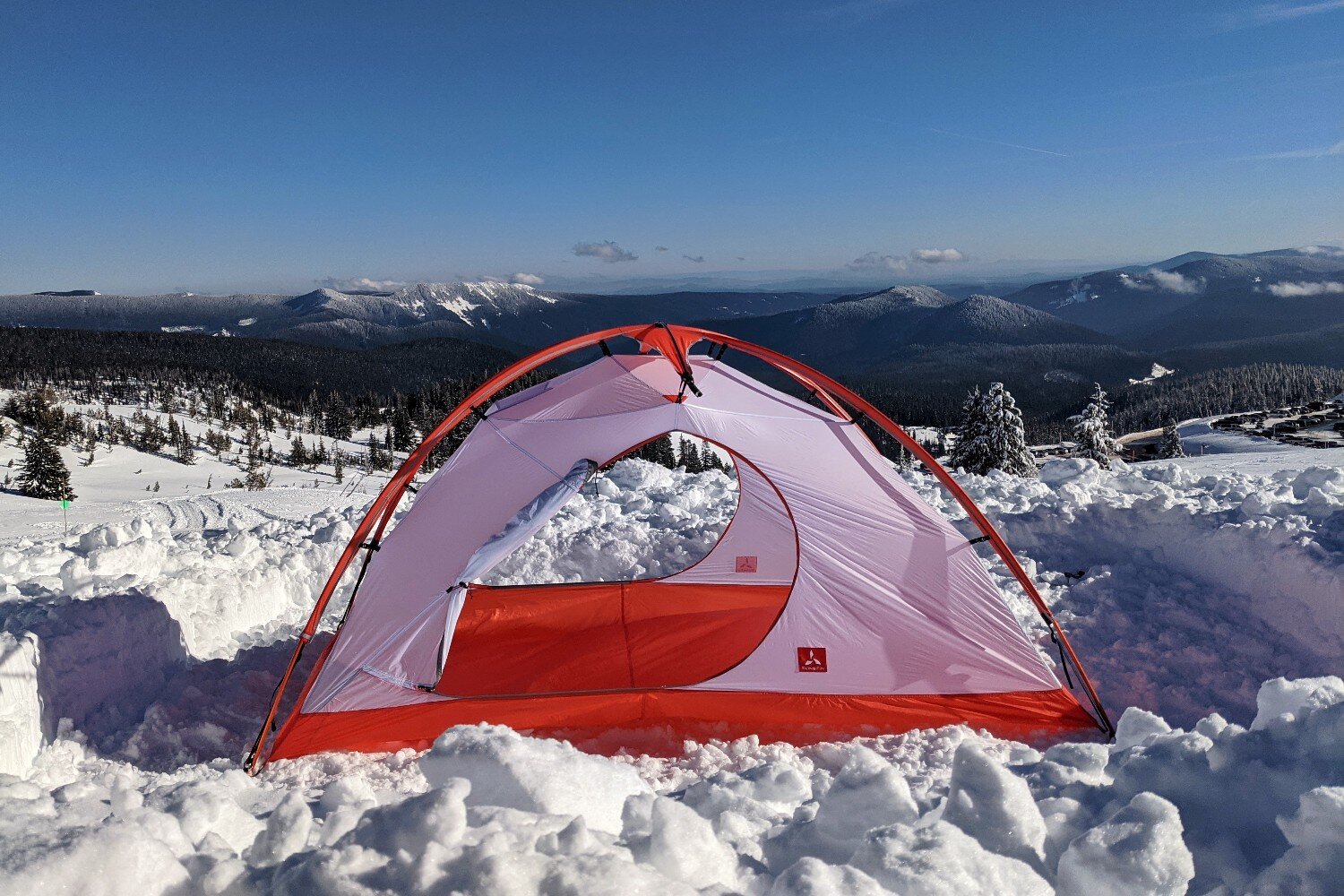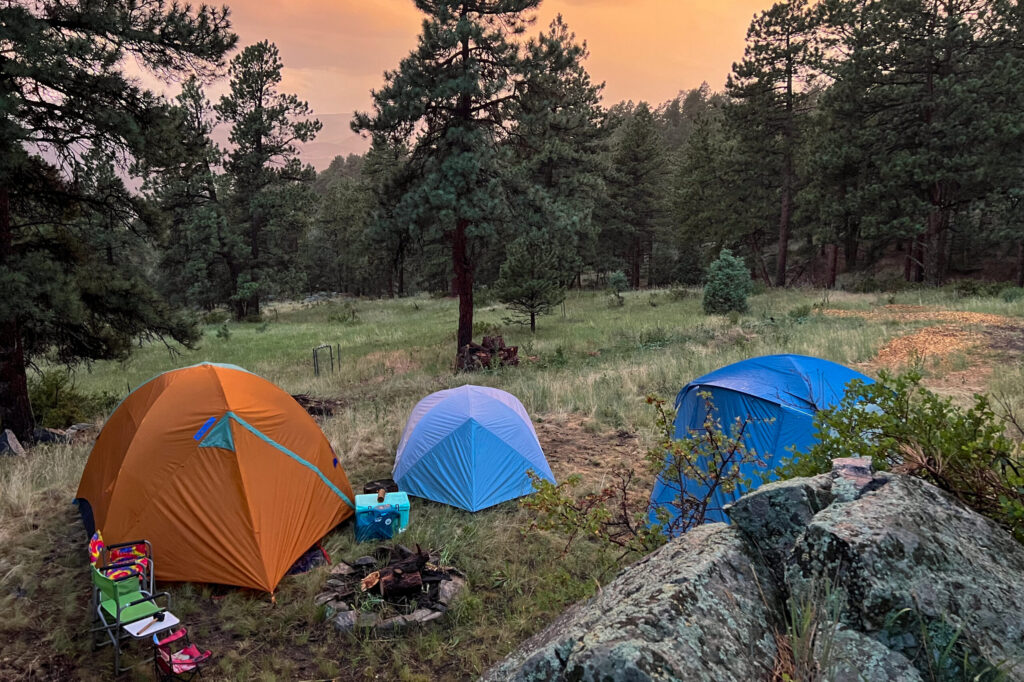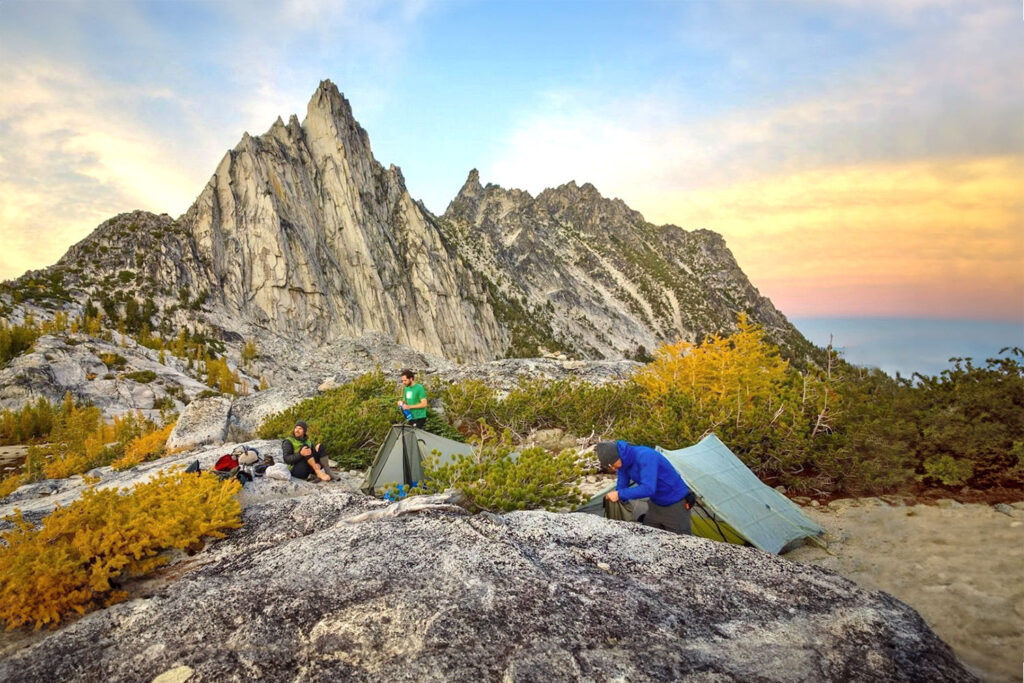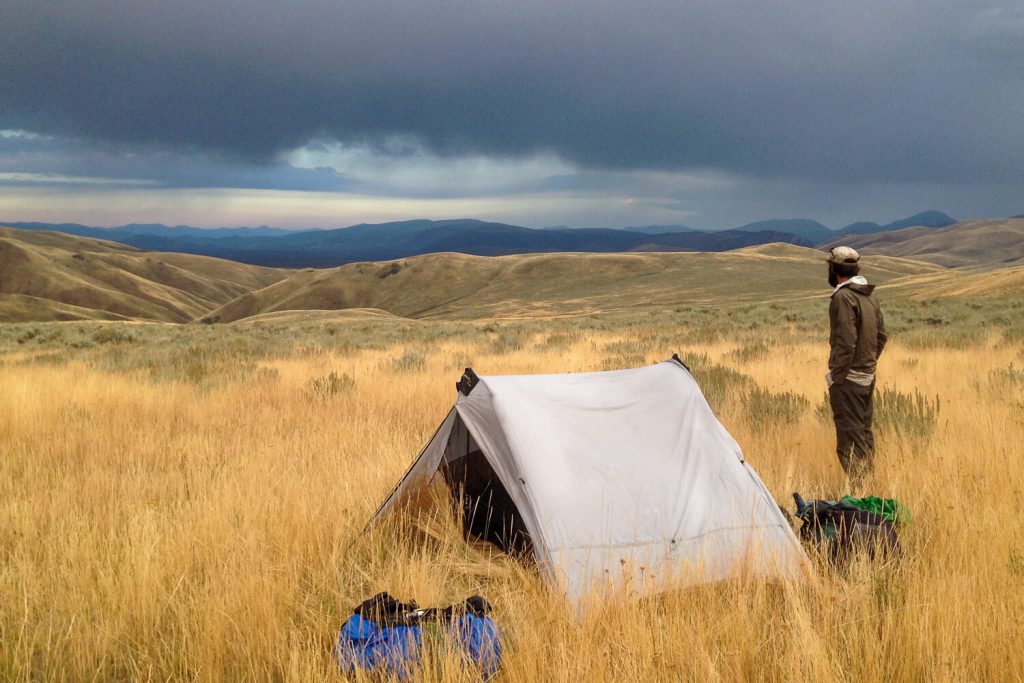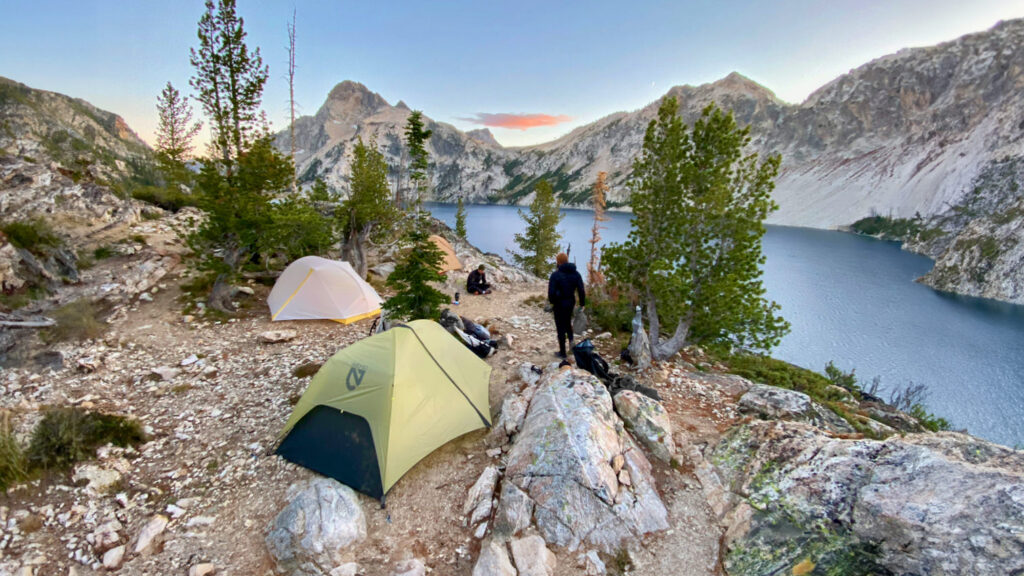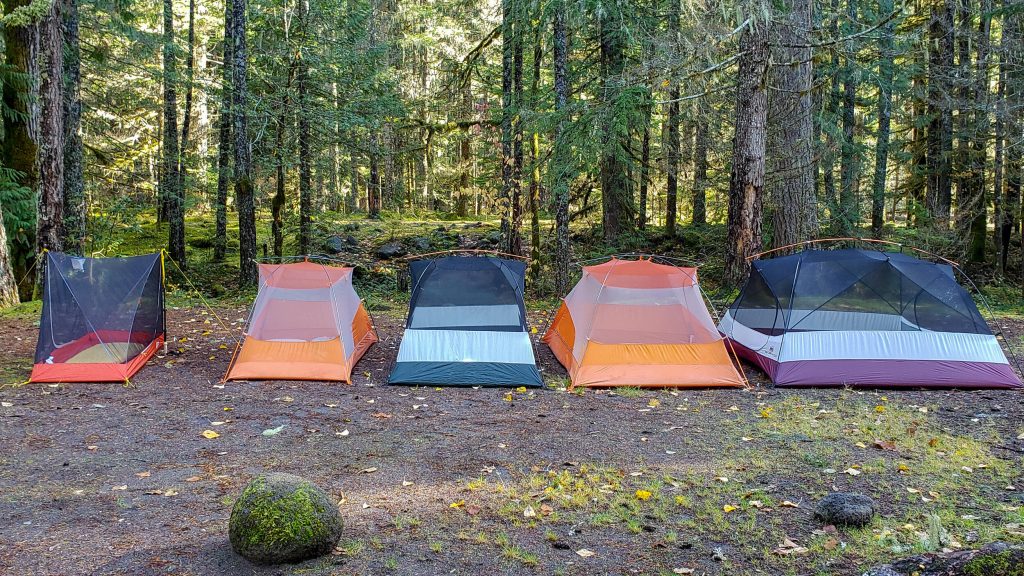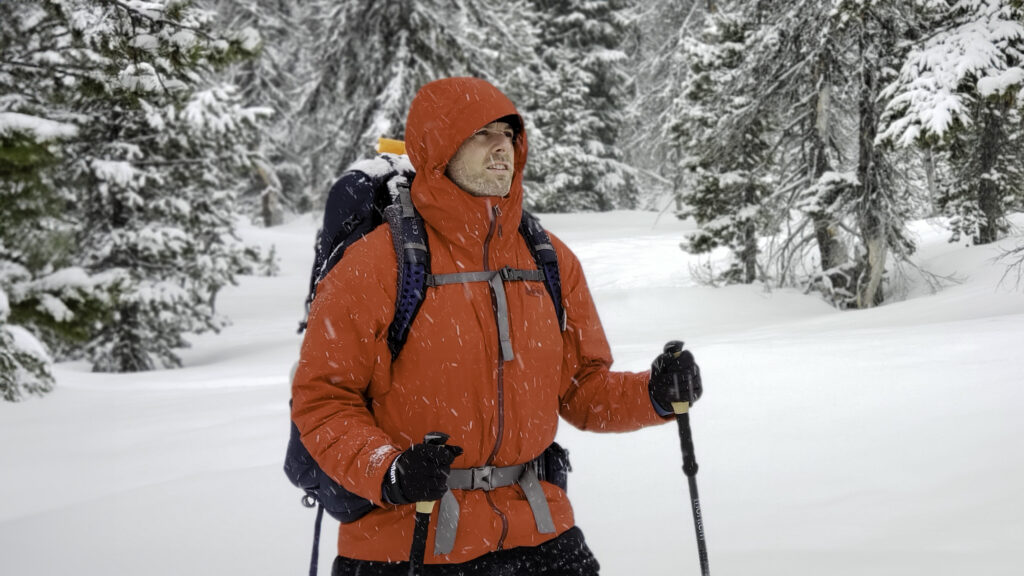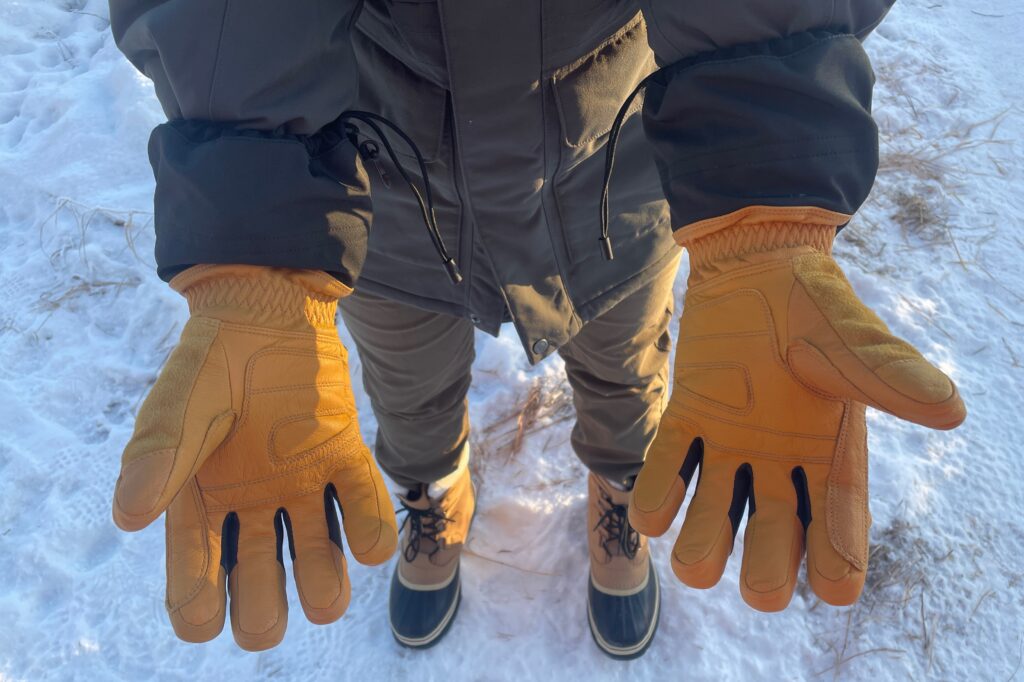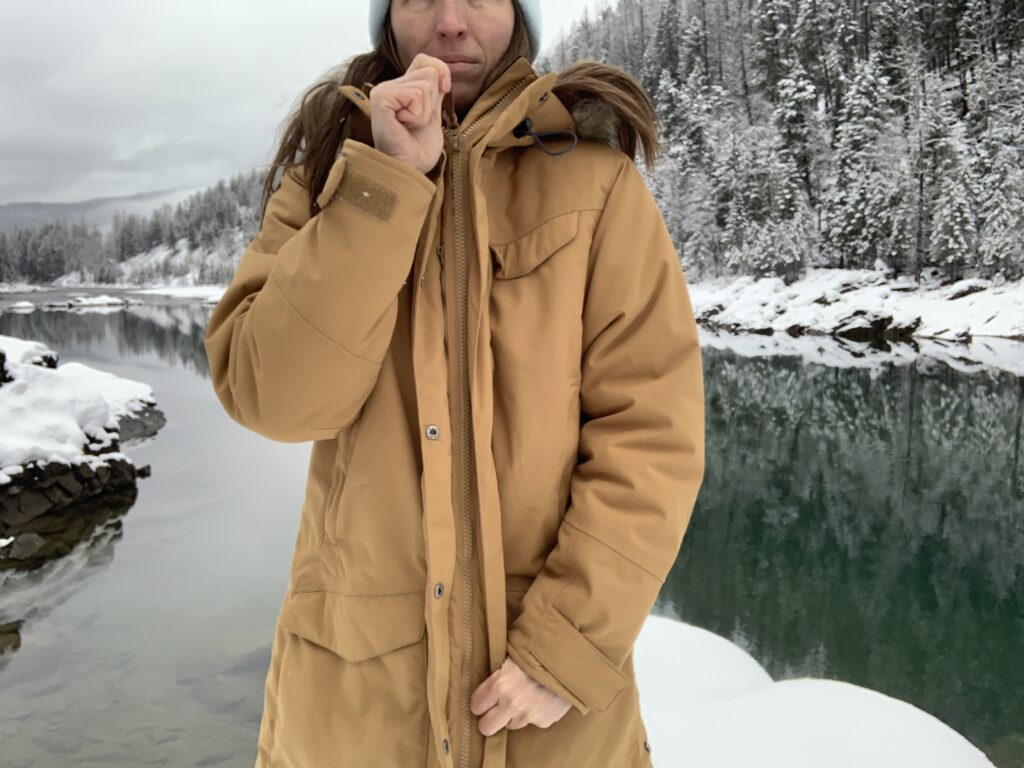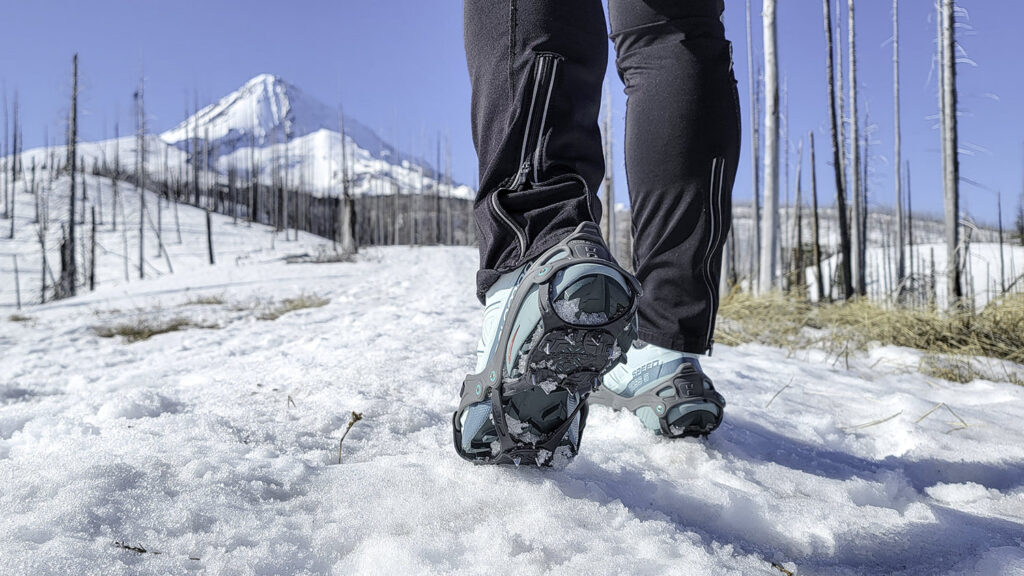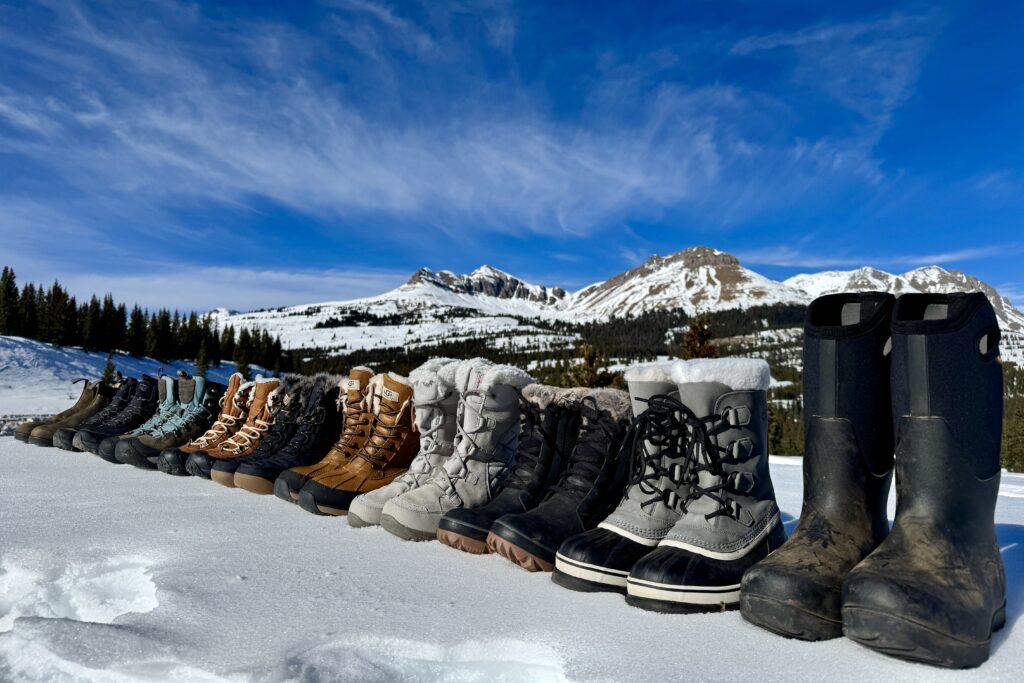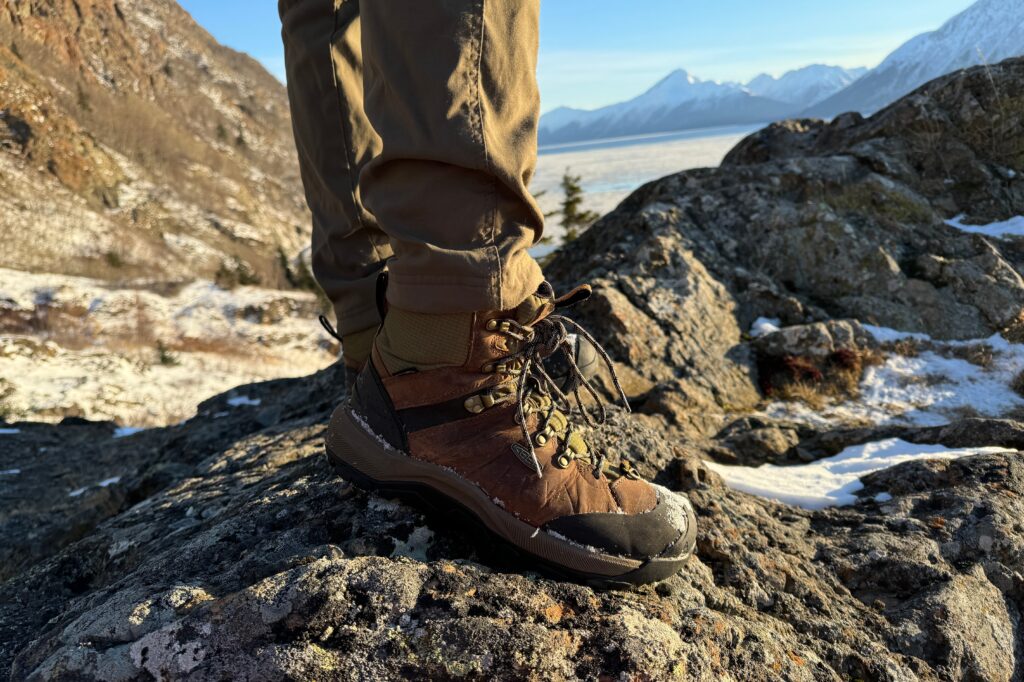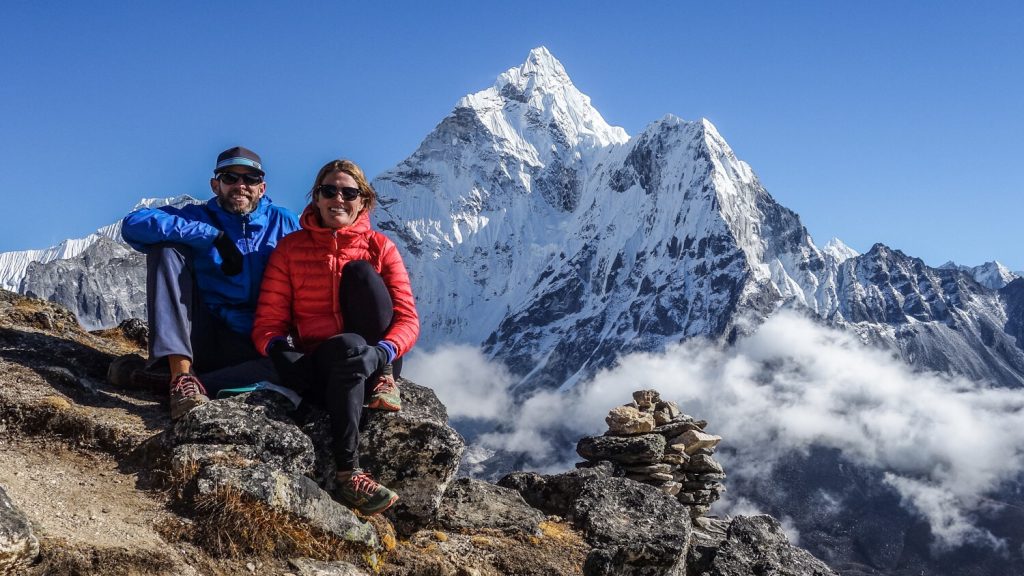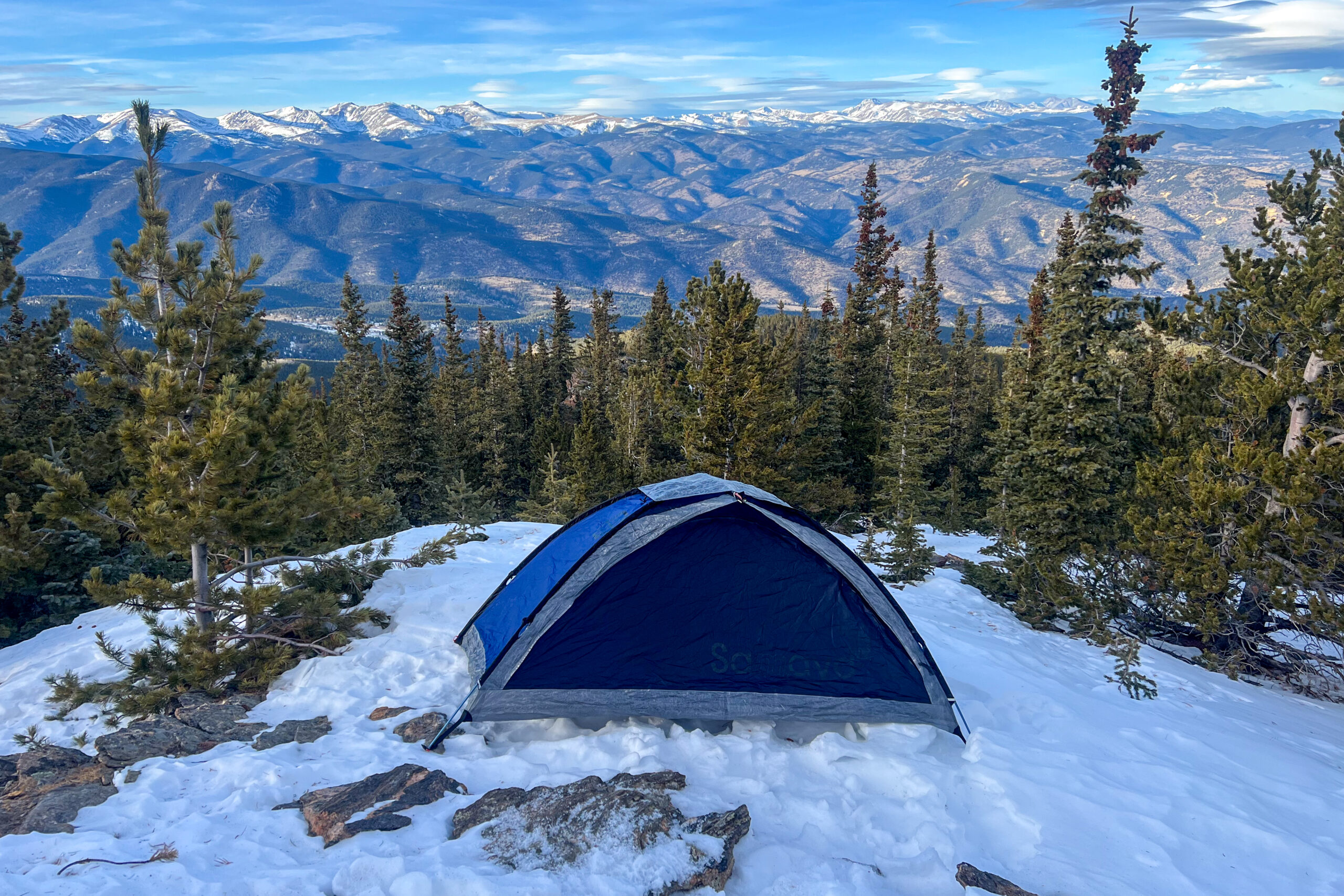
If you are a cold-weather camper, you need a trustworthy shelter to protect you in harsh winter conditions. We tested a dozen tents, and after 500 miles and 50 nights in frigid weather, we found the best ones. In this gear guide, we assess these winter shelters based on comfort, weather protection and durability, ease of setup, versatility, and price so you can spend less time researching and more time planning your trip.
And for more info, check out some of our other most popular gear guides:
Quick Picks for 4-Season Tents
Check out this quick list of our favorite winter tents, or continue scrolling to see our full list with in-depth reviews.
Best Overall 4-Season Tent: Mountain Hardwear Trango 2 ($950)
Best Overall 4-Season Tent Runner-Up: SlingFin CrossBow 2 ($790)
Best Wind-Resistant 4-Season Tent: KUIU Storm Star 2 ($600)
Best Basecamp-Style 4-Season Tent: The North Face Mountain 25 ($690)
Best High-Performance Alpine Tent: Samaya2.0 Blue ($940)
Best Long-term Value 4-season Tent: NEMO Equipment Kunai 2 ($550)
Most Versatile 4-Season Tent: Mountain Hardwear Mineral King 2 All-Season ($500)
Best Ultralight 4-Season Shelter: Hyperlite Mountain Gear Ultamid 2 ($700)
Best Budget 4-Season Tent: Alps Mountaineering Tasmanian 2 ($280)
Best 3+ Season Tent: Slingfin Portal 2 ($610)
Best Budget Alternative 4-Season Tent: REI Co-op Arete ASL 2 ($450)
Best Year-Round 4-Season Tent: MSR Access 2 ($800)
Best Minimalist Alpine 4-Season Tent: MSR Advance Pro 2 ($800)
What’s new
After another season of winter testing, we’ve added some new all-season tents:
- We welcome the timeless Mountain Hardwear Trango 2 back to the top of our lineup thanks to its time-tested durability.
- Another classic, The North Face Mountain 25, joins our top four as our favorite base-camp style tent.
- The Mountain Hardwear Mineral King 2 All-Season makes its debut in our gear guide thanks to its versatility.
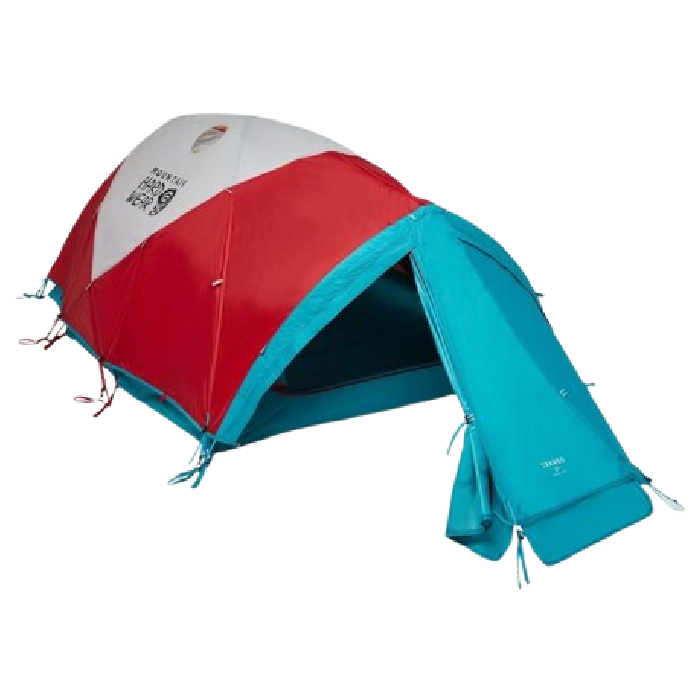
Mountain Hardwear Trango 2
Best Overall 4-Season Tent
CleverHiker Rating: 4.9/5.0
Price: $950
Weight: 9 lb. 7 oz.
Dimensions (LxWxH): 92 X 64 X 38
Square Footage: 40 sf
Pros
- Excellent durability
- Storm-worthy
- Large interior
- Dual vestibules
- Ample interior storage
- 3-point pre-installed guy lines
Cons
- Price
- Weight
- Large packed size
The Mountain Hardwear Trango 2 is a metaphorical giant in the world of four-season tents, and it’s without a doubt one of the most confidence-inspiring four-season tents we’ve tested. Bottom line: we love the Trango 2 for its exceptional stability in true winter conditions. If you regularly camp in high winds, deep snow, or exposed alpine terrain, the Trango 2 is absolutely worth a look. It feels reassuringly solid even in gnarly conditions. The Trango is a long-time favorite amongst mountaineers for a reason, and our hands-on testing confirmed its reputation.
What impressed us most is how solid and stable the tent feels once it’s pitched. The low-profile and sturdy pole structure keeps the Trango tight and quiet through gusty nights. We also appreciate the deep fly coverage and spacious front vestibule, which provide a protected spot for organizing gear or cooking in rough conditions. Together, the Trango 2’s features make a noticeable difference in day-to-day livability when you’re waiting out bad weather.
Of course, the Trango 2 isn’t trying to be an all-season, do-everything tent, and that’s important to know upfront. It’s heavy, it packs large, and ventilation is more limited than you’ll find on lighter four-season models. But none of these drawbacks are dealbreakers if you’re choosing this tent for its intended purpose (ie, its winter capabilities). In the conditions we tested, those compromises felt justified.
If your priority is a tent that will stand up to storms and keep you comfortable through long, cold nights, the Trango 2 is one of the most dependable shelters in its category. It’s a tent you buy for years of winter use, and it continues to show why it’s earned such a strong reputation.
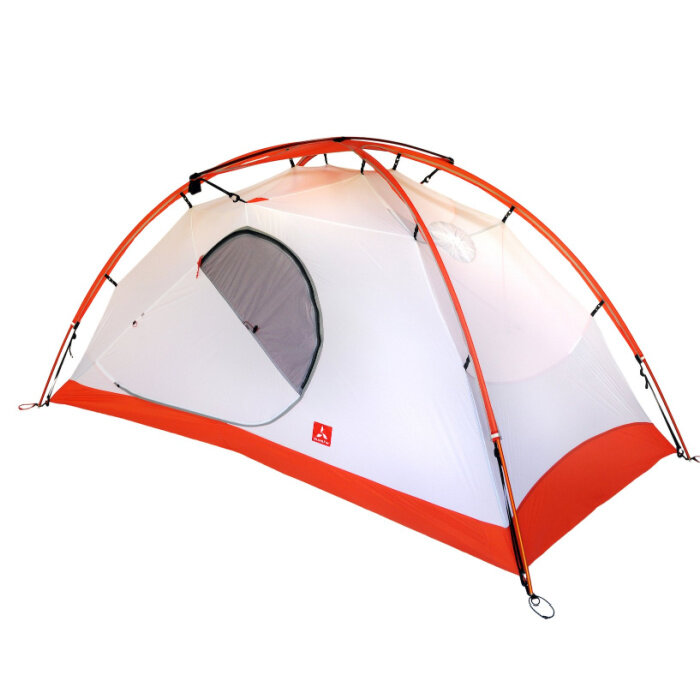
Slingfin CrossBow 2
Best Overall 4-Season Tent Runner-Up
CleverHiker Rating: 4.9/5.0
Price: $790
Weight: 5 lb. 2 oz.
Dimensions (LxWxH): 92 x 50 x 41.5
Square Footage: 32 sf
Pros
- Excellent value
- Spacious
- Small packet size
- Light & packable enough to be used all year
- Easy to set up
- Good ventilation
- 2 doors/vestibules
Cons
- We prefer guylines over loops for staking 4-season tents
The Slingfin CrossBow is hands down our top pick for a 4-season tent. It’s tough, dependable, and super versatile, handling everything from high winds to heavy snow. Whether you’re heading out for a winter camping trip or tackling year-round adventures, this tent has you covered (pun-intended).
The most unique feature of the CrossBow 2 is its WebTruss design. This innovative feature keeps the tent rock-solid in alternate weather without adding unnecessary weight. With two doors and vestibules, there’s plenty of room for gear and easy access for two people. This space also makes it a comfortable choice for longer trips. Plus, the ventilation system keeps condensation to a minimum, even in cold and damp conditions.
At just over 5 pounds, it is lightweight enough for summer backpacking but sturdy enough for winter storms. We also love how you can customize the setup—ditch the extras to save weight or go all-in for maximum weather resistance.
The setup takes a bit more effort than simpler designs, but once you get the hang of it, it’s worth it. If you’re looking for a tent that does it all and holds up in tough conditions, the SlingFin CrossBow 2 is a great pick. It’s one of the most reliable and versatile tents we’ve ever tested.
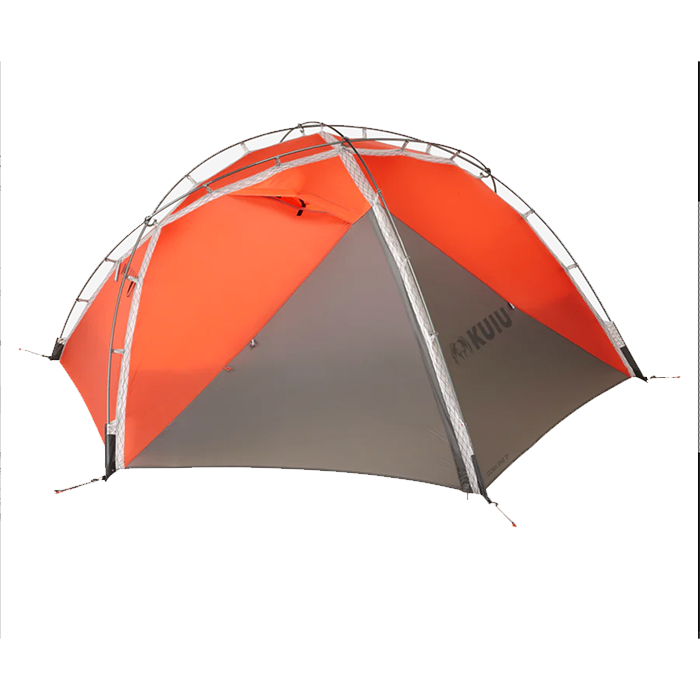
KUIU Storm Star 2
Best Wind-Resistant 4-Season Tent
CleverHiker Rating: 4.8/5.0
Price: $600
Weight: 5 lb. 14 oz.
Dimensions (LxWxH): 86 X 195 X 45 in
Square Footage: 29.5 sf
Pros
- Very durable
- Storm worthy
- Dual vestibules
- Two doors
- Plenty of interior storage
- Comes with enough stakes to fully guy-out tent
Cons
- Not for warm weather
- More complicated setup
- Unable to pitch without the fly
- Door tie-backs are poorly designed
The KUIU Storm Star 2 is a rugged, storm-defying tent, engineered to handle extreme conditions. Videos online even show this tent standing strong against hurricane-force winds. If you plan to camp in severe wind, heavy snow, or harsh alpine environments, this tent is a reliable choice. It’s incredibly sturdy and feels ready for anything Mother Nature throws its way.
During testing, we were impressed by how sturdy this tent felt. It shrugged off 40-60 mph winds thanks to its robust pole structure and well-placed (pre-attached) guy-out points. With two doors and vestibules, it offers plenty of gear storage, a big plus for winter adventures. The interior is cozy for two but, like many tents in its class, feels far more comfortable for solo campers.
The Storm Star isn’t the lightest tent out there—it weighs just under 6 pounds—but the trade-off is rock-solid durability. It’s more of a basecamp or short-haul tent than something you’d want to carry for miles. Setup is straightforward once you figure out the color-coded system, but the first few pitches might take a bit of practice.
If you’re tackling brutal weather and need a tent that’ll keep you safe and dry, the KUIU Storm Star 2 is hard to beat. It’s a reliable, storm-worthy shelter that makes a perfect companion for serious winter camping or alpine adventures.
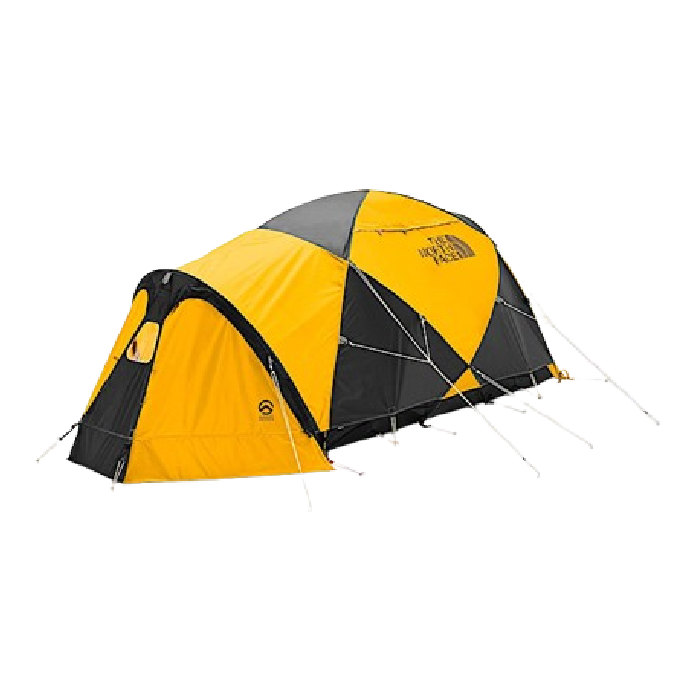
The North Face Mountain 25
Best Basecamp-Style 4-Season Tent
CleverHiker Rating: 4.7/5.0
Price: $690
Weight: 9 lb. 13 oz.
Dimensions (LxWxH): 86 X 54 X 41
Square Footage: 29.3 sf
Pros
- Good ventilation
- Two vestibules
- Storm-worthy
- Good internal storage
- Excellent build quality
- Pre-attached guy lines
Cons
- Weight
- Not the most versatile
- Setup takes some time
The North Face Mountain 25 is one of the most iconic four-season tents out there, and it earns its reputation as a reliable, storm-ready shelter built for serious winter adventures. If you want a tent that feels sturdy, predictable, and reassuring in harsh weather, you can’t go wrong with the Mountain 25. This is a model we have relied on over the years, and it continues to impress with its durability and all-around capability in cold, windy, and snowy environments.
One of the main reasons people love this tent is its balance of strength and livability. The pole structure is sturdy, but the interior layout feels slightly more spacious than many similar mountaineering tents. The large storage pockets are great for storing bulky winter gear. The dual-door, dual-vestibule design adds convenience and helps keep things sorted when you’re bringing wet, snowy gear inside.
There are trade-offs, but none rank as deal-breakers. The Mountain 25 is heavy and bulky, much like every true four-season tent in this category. It also runs warm in milder weather. Setup takes a little practice, though the color-coded poles and sleeves help make the process more intuitive. For winter camping or basecamp use, these drawbacks are just fine with us.
If you’re looking for a tough, time-tested shelter that offers a bit more comfort and interior space than many expedition models, the Mountain 25 is a fantastic choice. It’s not ultralight or overly modern, but it’s durable, dependable, and built to last through years of winter use.
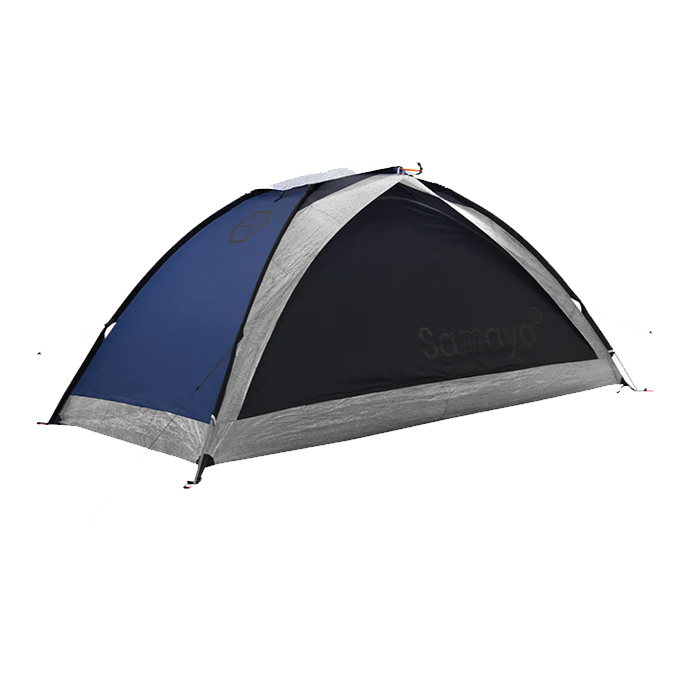
Samaya 2.0
Best High-Performance Alpine Tent
CleverHiker Rating: 4.7/5.0
Price: $1,100
Weight: 3 lb. 5 oz.
Dimensions (LxWxH): 87 X 43 X 39 in
Square Footage: 26 sf
Pros
- Ultralight
- Fully waterproof
- Large Door
- Good Ventilation
- High-tech materials
Cons
- Expensive
- Delicate
- Difficult to pack up when cold
The Samaya 2.0 is a great for mountaineers and alpinists who demand ultralight performance and serious weather protection. This fully waterproof (really), single-wall tent is built for fast-and-light alpine missions. It delivers exceptional bivy-style shelter in extreme conditions without weighing you down.
Samaya uses cutting-edge materials in the 2.0’s construction, such as the Dyneema floor and Nanovent walls. These deliver exceptional waterproofing while remaining breathable enough to manage condensation better than most single-wall designs. At just 3 pounds 5 ounces, it’s remarkably light, and its compact size makes it a dream for technical climbs or backcountry skiing.
While it’s not built for luxury, the 2.0 offers just enough space for two people—though it’s much more comfortable as a solo shelter. The large door makes getting in and out easy, but since a vestibule is not included (it’s an extra purchase), you’ll need to stash most of your gear outside. The setup is straightforward, but the lightweight materials require extra care to avoid wear and tear.
The Samaya 2.0 isn’t cheap and will be overkill for most users, but it’s worth every penny for serious adventurers tackling challenging alpine environments. This tent is hard to beat if you prioritize ultralight efficiency and top-tier weatherproofing. It’s a specialized tool for mountaineers who demand reliable protection without compromise.
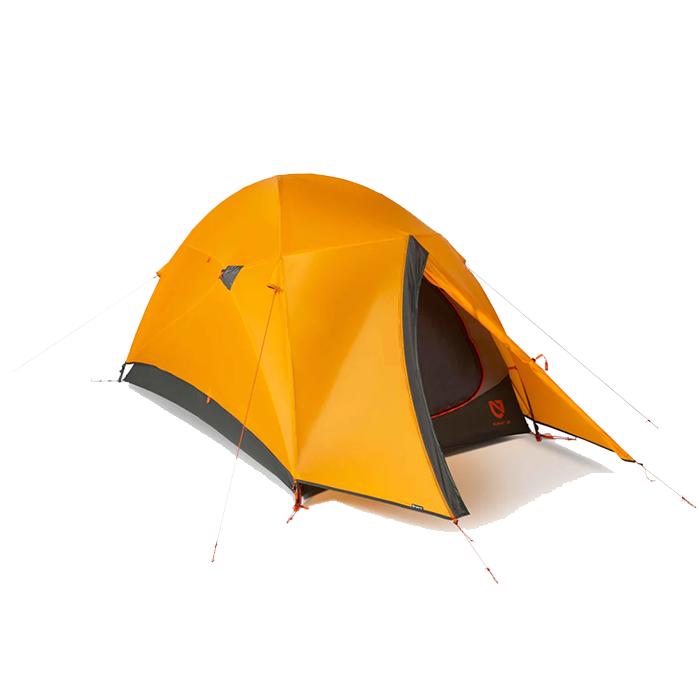
NEMO Equipment Kunai 2
Best Long-term Value 4-season Tent
CleverHiker Rating: 4.7/5.0
Price: $550
Weight: 4 lb. 5 oz.
Dimensions (LxWxH): 82 X 50 X 41 in
Square Footage: 26 sf
Pros
- Excellent value
- Fully waterproof
- Versatile
- Solid weather protection
- Adaptable ventilation
- Easy to set up
Cons
- Only one door & vestibule
- A bit tight for two
- Not as strong as some other mountaineering tents
We love the NEMO Equipment Kunai 2 as a versatile and budget-friendly 4-season tent that balances durability, weather protection, and weight. It’s an excellent option for adventurers who need a dependable shelter designed primarily for colder weather but can still work for year-round use.
What sets the Kunai 2 apart is its lightweight but solid construction. Weighing just 4 pounds 5 ounces, it’s one of the lightest 4-season tents we tested, perfect for backpacking or ski touring. The double-wall construction features large mesh panels that provide excellent ventilation and condensation control, while the solid nylon panels add warmth and protection when temperatures drop.
Inside, the Kunai 2 offers enough headroom for most users to sit comfortably. However, the single door and relatively compact floor space can feel tight for two people with winter gear. For solo use, though, it’s a spacious and reliable setup. The tapered profile handles wind and sheds snow well, giving you confidence in unpredictable weather.
For adventurers looking for a solid all-rounder at a reasonable price, the NEMO Kunai 2 delivers excellent value. It’s not as roomy or feature-packed as some pricier options. Still, its lightweight design and dependable performance make it a good choice for moderate winter conditions and shoulder-season adventures.
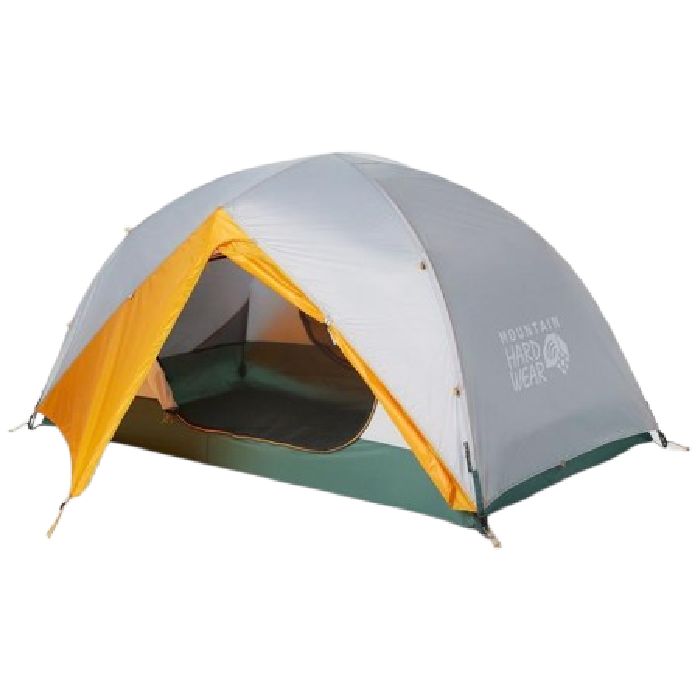
Mountain Hardwear Mineral King 2 All-Season
Most Versatile 4-Season Tent
CleverHiker Rating: 4.6/5.0
Price: $500
Weight: 6 lb. 9 oz.
Dimensions (LxWxH): 88 X 50 X 42
Square Footage: 18.75 sf
Pros
- Easy to pitch
- Footprint included
- Good ventilation
- Versatile
- 2 large doors
Cons
- Low quality stakes
- On the heavy side
The Mountain Hardwear Mineral King 2P All-Season is an approachable, budget-friendly option for campers looking to extend their adventures into winter without launching into full-blown mountaineering territory. Mountain Hardwear took the well-loved Mineral King layout with its dual doors and vestibules, pre-bent poles, intuitive setup, and rebuilt it with burlier materials and a solid inner canopy to boost warmth and weather protection. The result is a tent that feels familiar, easy to use, and impressively comfortable for its class.
In testing across cold but sunny winter days, snowy nights near 0°F, and typical Colorado shoulder-season conditions, the Mineral King 2 gave us reliable warmth, solid storm protection, and a surprisingly livable interior for a smaller tent. The huge doors roll completely out of the way, storage is decent, and features like exterior gear pockets and an internal gear line add convenience when dealing with wet, frozen, or bulky winter gear.
While it’s durable enough to survive mishaps, including a windstorm that sent ours tumbling 200 yards down a mountainside, its wind performance depends heavily on proper guyline use, and the included stakes aren’t up for serious weather. Ventilation is also limited due to the lack of roof vents, so condensation management requires attention in humid or still conditions.
The Mineral King 2 All-Season works well as a treeline-focused winter shelter for campers seeking warmth, ease of setup, and a good suite of features at a reasonable price. It’s not built for high-alpine expeditions or brutal winter winds. It’s great for below-treeline snow camping, shoulder-season trips, and hikers exploring colder conditions for the first time.
More: Mountain Hardwear Mineral King 2-Person All-Season Full Review
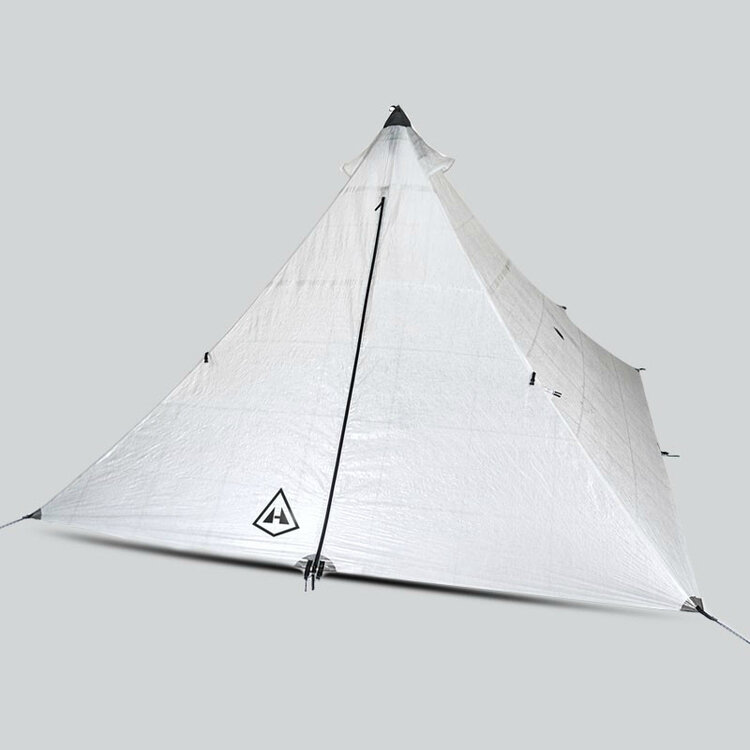
Hyperlite Mountain Gear Ultamid 2
Best Ultralight 4-Season Shelter
CleverHiker Rating: 4.5/5.0
Price: $700
Weight: 1 lb. 2 oz.
Dimensions (LxWxH): 107 X 83 X 64 in
Square Footage: 63 sf
Pros
- Ultralight
- Spacious
- Versatile
- Durable
- Good ventilation
- DFC material won't sag or soak up water when wet
- Small packed size
- Very large door
Cons
- Expensive (especially if you also get the mesh insert)
- Takes more practice to pitch than some
- Snow can fall inside when opening the tarp
The HMG Ultamid 2 is an ultralight 4-season tarp with a generous amount of living space. The pyramid shape of this tent effectively sheds snow and heavy rain, and there are plenty of guyouts on all sides for stability in windy conditions.
To make this floorless shelter comfortable for snow camping, you’ll want to purchase the half insert if you’re a solo trekker or the full insert for two people.
This added cost makes the Ultamid the most expensive tent on our list. We love the versatility of the Ultamid, as it’s lightweight, strong, and packable enough to be used for backpacking in pretty much any condition. Check out our full review for more info.
More:
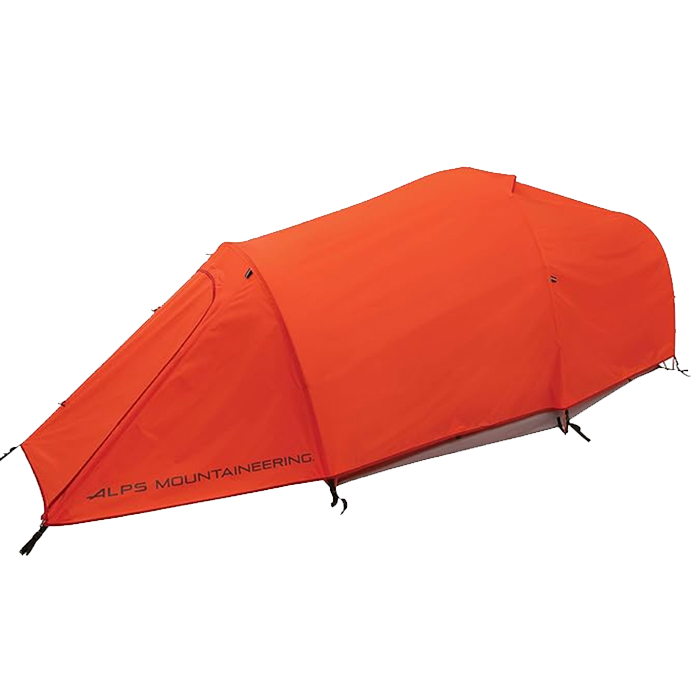
Alps Mountaineering Tasmanian 2
Best Budget 4-Season Tent
CleverHiker Rating: 4.5/5.0
Price: $280
Weight: 7 lb. 15 oz.
Dimensions (LxWxH): 92 X 62 X 46 in
Square Footage: 35.5 sf
Pros
- 3+ season versatility
- Dual Vestibules
- Great Value
- Spacious
- Decent ventilation
Cons
- Heavy
- Clunky fly setup
- Low door makes access difficult
The Alps Mountaineering Tasmanian 2 is a well-built, reliable and budget-friendly 4-season tent that punches above its weight when it comes to durability and weather protection. Perfect for winter camping and below-treeline adventures, it’s a great option for those who want to dip their toes into winter camping without breaking the bank.
The first thing you’ll notice with the Tasmanian 2 is its spacious interior. With 46 inches of peak height and a 92-inch floor length, it’s roomy enough for taller campers to sit up and stretch out. Dual vestibules and large interior pockets provide plenty of storage for gear, which is a huge plus when dealing with bulky winter equipment. The tent retains heat well and ventilates effectively in cold conditions, making it a cozy shelter for winter trips.
Weighing in at just under 8 pounds, it’s the heaviest tent in our testing pool, but the trade-off is surprising durability. The tent’s 75D polyester fly and 5000mm waterproof-coated floor easily handle snow and wet conditions. The setup is straightforward, but threading the poles through the sleeves on the rainfly can be tricky in windy weather.
For adventurers on a budget, the Tasmanian 2 offers excellent value. It’s not ideal for ultralight backpacking or extreme alpine conditions, but for cold-weather camping and basecamp setups, this tent is dependable, comfortable, and hard to beat at this price point.
More: Alps Mountaineering Tasmanian 2 4-Season Tent Full Review
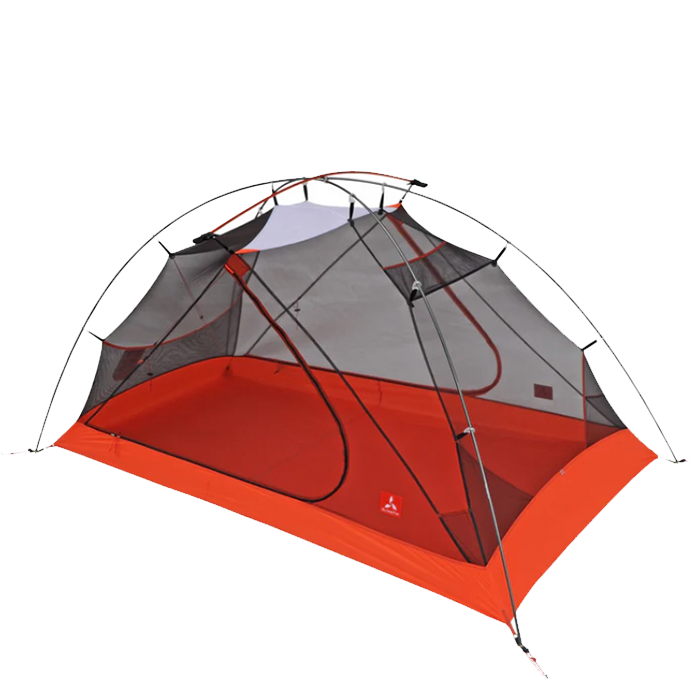
Slingfin Portal 2
Best 3+ Season Tent
CleverHiker Rating: 4.5/5.0
Price: $610
Weight: 3 lb. 5 oz.
Dimensions (LxWxH): 85 X 51 X 44 in
Square Footage: 27.45 sf
Pros
- Excellent weather protection
- Lightweight
- Roomy interior
- Durable
- Ample headroom
- Freestanding design is quick/easy to set up
- Useful pockets
- Large doors/vestibules
- Quality construction/materials
Cons
- Expensive
- Rainfly zippers can snag
The SlingFin Portal 2 is an excellent choice for backpackers who need a lightweight, weather-resistant tent that performs well in harsh conditions. It combines the features of a four-season tent with the portability of a three-season shelter, excelling in wind, rain, and even light snow. Thus, it is a versatile and reliable option for shoulder-season and year-round adventures.
One of the Portal 2’s best features is its thoughtful design for livability. With near-vertical walls, ample headroom, and multiple storage pockets, it offers above-average comfort for a lightweight backpacking tent. Dual doors and vestibules enhance accessibility and gear storage, while internal guylines and the option to add trekking poles provide extra stability in strong gusts.
Weighing just 3 lbs. 5 oz., the Portal 2 balances strength and weight well, though it’s not the lightest option for ultralight enthusiasts. Its durable materials resist UV damage and moisture, which hopefully means long-term reliability, but users should handle the lightweight fabrics carefully to avoid tears. The rainfly zippers and lack of included guylines for all attachment points could pose minor inconveniences.
For backpackers venturing into variable or challenging conditions, the SlingFin Portal 2 has an ideal blend of comfort, durability, and protection without adding unnecessary bulk to your pack.

REI Co-op Arete ASL 2
Best Budget Alternative Tent
CleverHiker Rating: 4.5/5.0
Price: $450
Weight: 6 lb. 5 oz.
Dimensions (LxWxH): 88 X 60 X 43 In
Square Footage: 32.9 sf
Pros
- 3+ season versatility
- Budget friendly
- Easy setup
- Good ventilation
- Storm worthy
- Freestanding design is quick/easy to set up
- Good interior storage
Cons
- Heavy
- Small vestibule
- Not the best in high winds
The REI Co-op Arete ASL 2 is a versatile, budget-friendly tent that offers reliable performance for shoulder-season and below-treeline winter adventures. It bridges the gap between three- and four-season shelters, making it an excellent option for backpackers and winter campers seeking affordability without sacrificing durability or comfort.
Despite its somewhat lightweight design (6 lbs. 5 oz.), the Arete ASL 2 has solid weather protection, effectively handling snow, wind, and rain. Its spacious interior offers enough room for two campers, while features like overhead storage pockets and a high peak height add to its livability. However, the single door and small vestibule limit accessibility and gear storage, especially on extended trips.
The Arete ASL 2 stood out during our testing for its easy setup and dependable construction. Color-coded poles and webbing make pitching simple, even for less experienced users. While it’s not meant for extreme alpine or above-treeline adventures, it’s a solid choice for moderate winter and shoulder-season trips, giving you more insulation and protection than most three-season tents.
The REI Co-op Arete ASL 2 is a strong choice for adventurers seeking an adaptable and cost-effective four-season tent. It’s perfect for those dipping their toes into winter camping or anyone needing a reliable, durable tent for mild winter and year-round use.
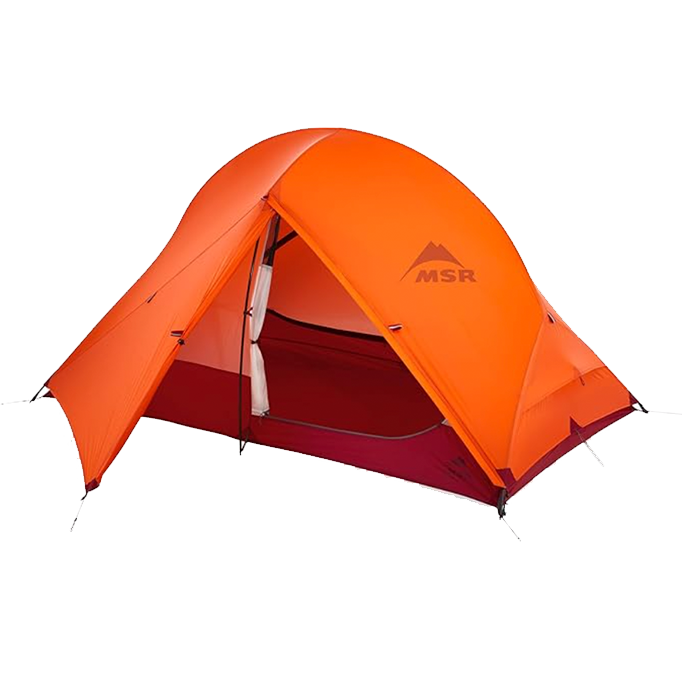
MSR Access 2
Best Year-Round 4-Season Tent
CleverHiker Rating: 4.3/5.0
Price: $800
Weight: 4 lb. 1 oz.
Dimensions (LxWxH): 85 X 51 X 44 in
Square Footage: 29 sf
Pros
- Lightweight
- Easy to pitch
- Dual vestibules
- Durable
- Two door design
- Freestanding design is quick/easy to set up
- Easy to setup
- Versatile
Cons
- Not as comfy for tall users
- Poles need to be treated with care
- Condensation Issues
The MSR Access 2 is one of the lightest and most packable 4-season tents on the market, making it an excellent choice for those prioritizing weight savings and simplicity. At just 4 pounds 1 ounce, it’s significantly lighter than many traditional mountaineering and base camping tents, and its compact packed size makes it easy to carry for ski touring or winter backpacking trips. The peak height is enough to sit upright comfortably in the middle, but the lack of pole support at the head and foot areas means the space can feel tight, especially for taller campers.
The smaller interior has advantages—it’s easier to warm up on cold nights, and the cozy design is well-suited for sub-treeline winter adventures. The Access 2 is also simple to pitch, which is a big plus when setting up camp in snowy or windy conditions. While it’s not the most spacious option for extended stays or gear-heavy trips, its balance of weight, packability, and ease of use make it a strong contender for adventurers seeking a dependable, lightweight 4-season shelter.
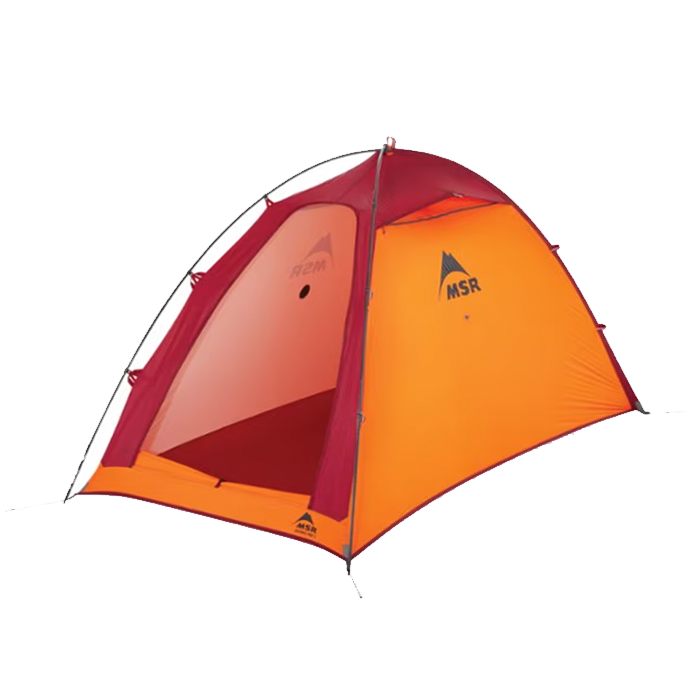
MSR Advance Pro 2
Best Budget Alternative Tent
CleverHiker Rating: 4.2.5.0
Price: $800
Weight: 3 lb. 3 oz.
Dimensions (LxWxH): 82 X 42 X 44 in
Square Footage: 24 sf
Pros
- Ultralight
- Quick and easy setup
- Small pack size
- Sturdy
- Storm worthy
Cons
- No vestibule
- Condensation issues
- No internal stash pockets
The MSR Advance Pro 2 is a purpose-built, minimalist alpine tent designed for fast-and-light missions in extreme environments. Its ultralight weight (3 lbs. 3 oz.) and compact size make it ideal for mountaineers and climbers who prioritize speed and efficiency without compromising stormworthiness.
This single-wall tent offers excellent weather resistance. It features durable Easton Syclone poles and waterproof, breathable fabric that easily handles wind, snow, and precipitation. The steep walls and compact footprint make it perfect for small, exposed platforms on high-altitude terrain. However, the minimal design means limited interior space. It is best suited for two people willing to pack light or for solo adventurers seeking a roomy shelter.
While the Advance Pro 2 excels in weight savings and durability, it has trade-offs. The lack of a vestibule limits gear storage, and ventilation can be challenging, leading to condensation in humid or warmer conditions. Setup is quick and efficient, but mastering the process in harsh weather requires practice.
The MSR Advance Pro 2 is a reliable, ultralight shelter built to perform in the most challenging conditions if you’re tackling technical ascents or high-altitude expeditions. For those who value portability and weather protection over comfort, it’s a standout choice for alpine adventures.
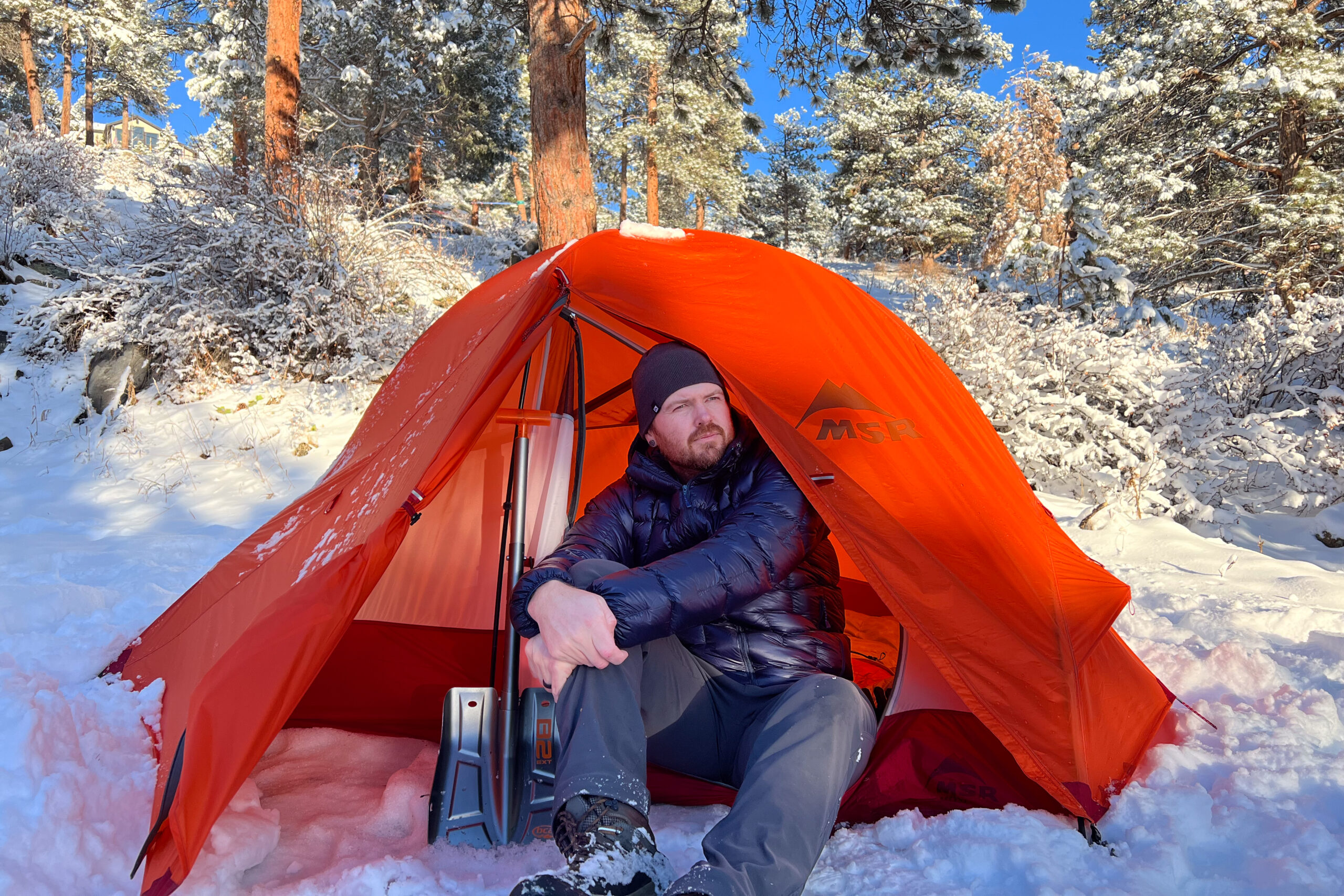
Product Comparison Table
| oSort | Product | CleverHiker Rating | Price | Weight | Dimensions (LxWxH) | Square Footage | Comfort | Weight & Packed Size | Weather Resistance | Ease of Setup | Durability | Versatility | 0 |
Mountain Hardwear Trango 2 View at REI View at Mountain Hardwear |
4.9/5.0 | $950 | 9 lb. 7 oz. | 92 X 64 X 38 | 40 sf | 4.7 | 3.7 | 4.9 | 4.5 | 4.9 | 4.1 | 1 |
Slingfin CrossBow 2 View at Slingfin |
4.9/5.0 | $790 | 5 lb. 2 oz. | 92 x 50 x 41.5 | 32 sf | 4.4 | 4.3 | 4.8 | 4.7 | 4.7 | 4.9 | 2 |
KUIU Storm Star 2 View at KUIU |
4.8/5.0 | $600 | 5 lb. 14 oz. | 86 X 195 X 45 in | 29.5 sf | 4.5 | 4.3 | 4.5 | 4.2 | 4.9 | 4.5 | 3 |
The North Face Mountain 25 View at REI View at The North Face |
4.7/5.0 | $690 | 9 lb. 13 oz. | 86 X 54 X 41 | 29.3 sf | 4.6 | 3.7 | 4.9 | 4.5 | 4.8 | 4.1 | 4 |
Samaya 2.0 View at Backcountry |
4.7/5.0 | $1,100 | 3 lb. 5 oz. | 87 X 43 X 39 in | 26 sf | 3.9 | 4.9 | 4.8 | 4.8 | 4 | 4.3 | 5 |
NEMO Equipment Kunai 2 View at Backcountry |
4.7/5.0 | $550 | 4 lb. 5 oz. | 82 X 50 X 41 in | 26 sf | 4.3 | 4.6 | 4.5 | 4.7 | 4.6 | 4.7 | 6 |
Mountain Hardwear Mineral King 2 All-Season View at Mountain Hardwear |
4.6/5.0 | $500 | 6 lb. 9 oz. | 88 X 50 X 42 | 18.75 sf | 4.5 | 4.1 | 4.5 | 4.9 | 4.6 | 4.6 | 7 |
Hyperlite Mountain Gear Ultamid 2 View at Hyperlite |
4.5/5.0 | $700 | 1 lb. 2 oz. | 107 X 83 X 64 in | 63 sf | 4.7 | 5 | 4.4 | 4.3 | 4.7 | 4.8 | 8 |
Alps Mountaineering Tasmanian 2 View at Amazon |
4.5/5.0 | $280 | 7 lb. 15 oz. | 92 X 62 X 46 in | 35.5 sf | 4.7 | 3.8 | 4.6 | 4.2 | 4.7 | 4.4 | 9 |
Slingfin Portal 2 View at Slingfin |
4.5/5.0 | $610 | 3 lb. 5 oz. | 85 X 51 X 44 in | 27.45 sf | 4.4 | 4.9 | 4.5 | 4.7 | 4.7 | 4.6 | 10 |
REI Co-op Arete ASL 2 View at REI |
4.5/5.0 | $450 | 6 lb. 5 oz. | 88 X 60 X 43 In | 32.9 sf | 4.6 | 4.1 | 4.5 | 4.6 | 4.4 | 4.6 | 11 |
MSR Access 2 View at REI |
4.3/5.0 | $800 | 4 lb. 1 oz. | 85 X 51 X 44 in | 29 sf | 4.3 | 4.7 | 4.1 | 4.6 | 4.1 | 4.7 | 12 |
MSR Advance Pro 2 View at Amazon |
4.2.5.0 | $800 | 3 lb. 3 oz. | 82 X 42 X 44 in | 24 sf | 3.8 | 4.9 | 4.3 | 4.2 | 4.5 | 4 |
|---|
How We Test & Methodology
We tested over a dozen 4-season tents in some of the harshest environments, including snowy alpine campsites, exposed ridgelines, and high-altitude basecamps. Over the course of 60 nights and 400 miles in the backcountry, we evaluated each tent based on six key metrics: weather resistance, weight and packability, interior comfort, ease of setup, durability, and versatility. Our goal was to identify top-performing shelters that can handle winter and shoulder-season adventures while meeting the needs of various types of campers.
WEATHER RESISTANCE
To assess weather resistance, we pitched each tent in wind gusts exceeding 40 mph, snowstorms, and, when possible, heavy rain. We evaluated how well the tent’s design shed snow, withstood wind pressure, and kept the interior dry. Features such as full-coverage rainflies, sturdy pole structures, and reinforced guy-out points were thoroughly scrutinized to ensure reliable performance in extreme conditions.
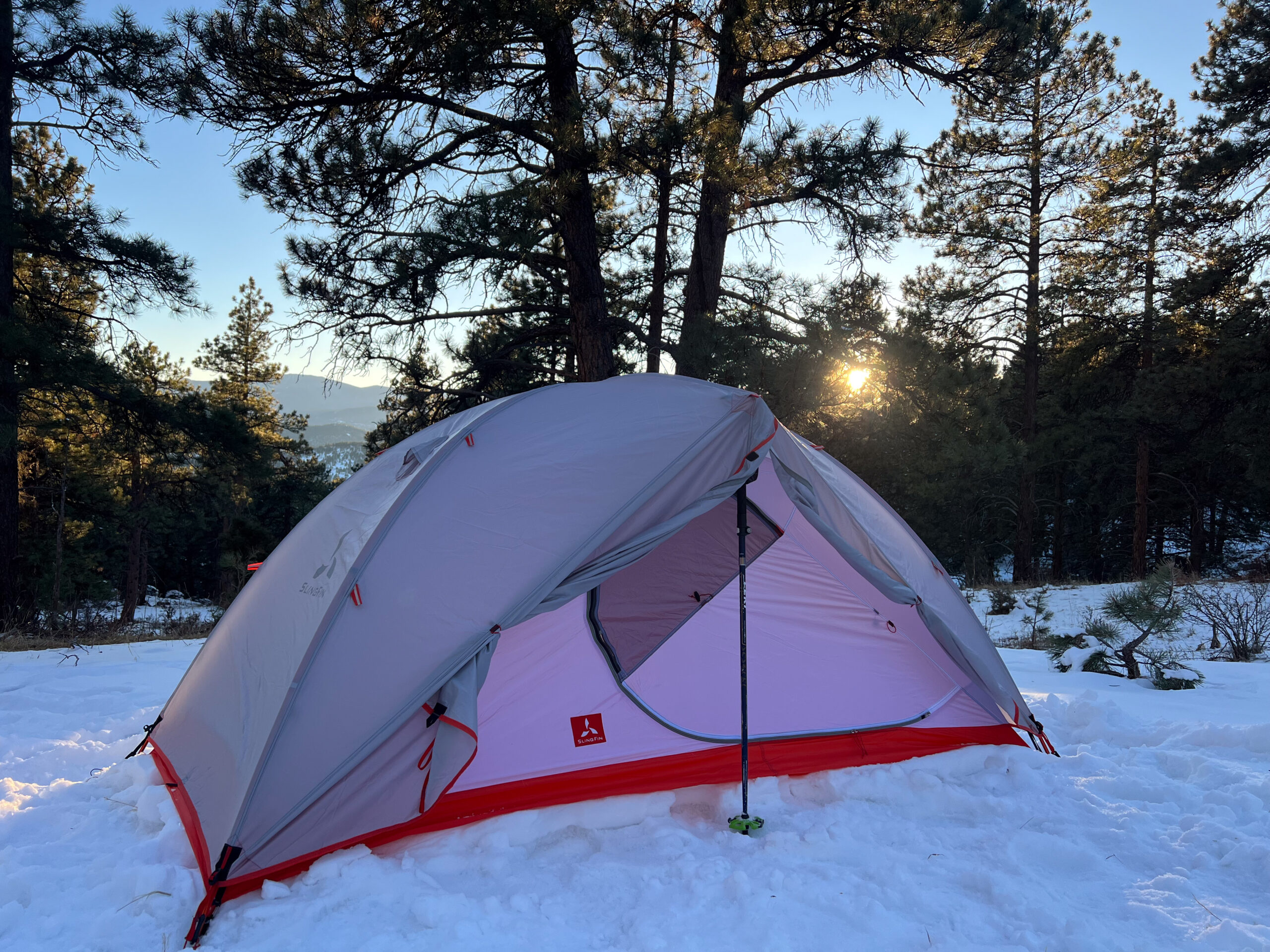
WEIGHT & PACKABILITY
Weight is a critical factor for backpackers, so we weighed each tent and its packed components to verify manufacturer claims. We also tested how well the tents compressed into their stuff sacks and fit into backpacks. Lighter models were rated higher for portability, but we also considered the trade-offs between weight savings and performance in harsh environments.
INTERIOR COMFORT
We assessed comfort by looking at usable floor space, headroom, and vestibule storage capacity. Our testing included evaluating how easy it was to move around inside the tent, how effectively gear could be stored, and overall livability during extended waits for bad weather to pass. Features such as dual vestibules, ample pockets, and well-designed ventilation made a significant difference in our evaluations. We also factored in real-world camping experiences, noting how well the tent managed condensation and maintained a comfortable interior environment in various conditions.
EASE OF SETUP
We tested each tent’s setup process under various conditions, including daylight, dusk, and windy weather, to evaluate the ease and efficiency of assembly. To gauge intuitiveness, we pitched each tent for the first time without consulting instructions. Key factors included color-coded poles, straightforward designs, and the ability to set up in challenging conditions quickly. We also assessed how easy it was to secure the tents using guylines in snow or rocky terrain, ensuring they remained stable and secure in real-world environments.
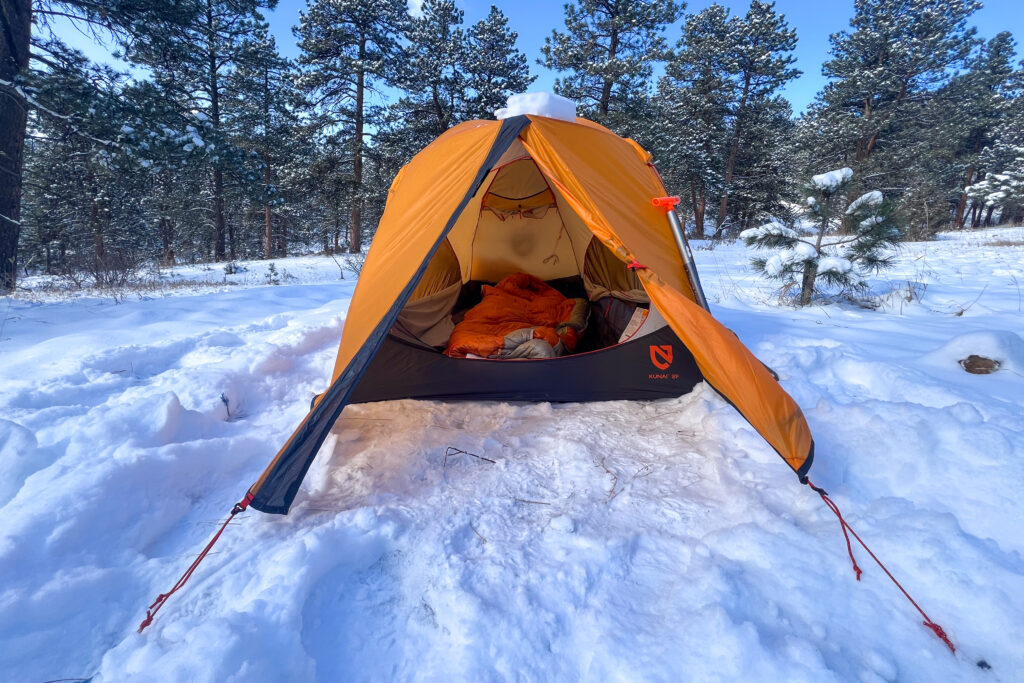
DURABILITY
Each tent was evaluated for its durability and ability to withstand repeated use in rough conditions, including significant snow loads. We prioritized high-quality materials like ripstop nylon and DAC poles, along with reinforced stitching and abrasion resistance to ensure they could handle demanding environments.
To test snow handling, we added weight to simulate heavy snow accumulation and observed how the pole structure and fabric held up under pressure. We also took our tents to the snowiest locations we could reach. After weeks of setup, teardown, and exposure to snow, sun, and wind, we inspected the tents for wear and tear, paying close attention to zippers, seams, and overall fabric integrity.
VERSATILITY
We tested each tent’s ability to adapt to different seasons and environments. Models that worked well across a range of conditions—such as snow camping, windy ridges, and mild-weather backpacking—received higher scores. Ventilation, modular designs, and weight-to-performance ratios were all considered in this category.
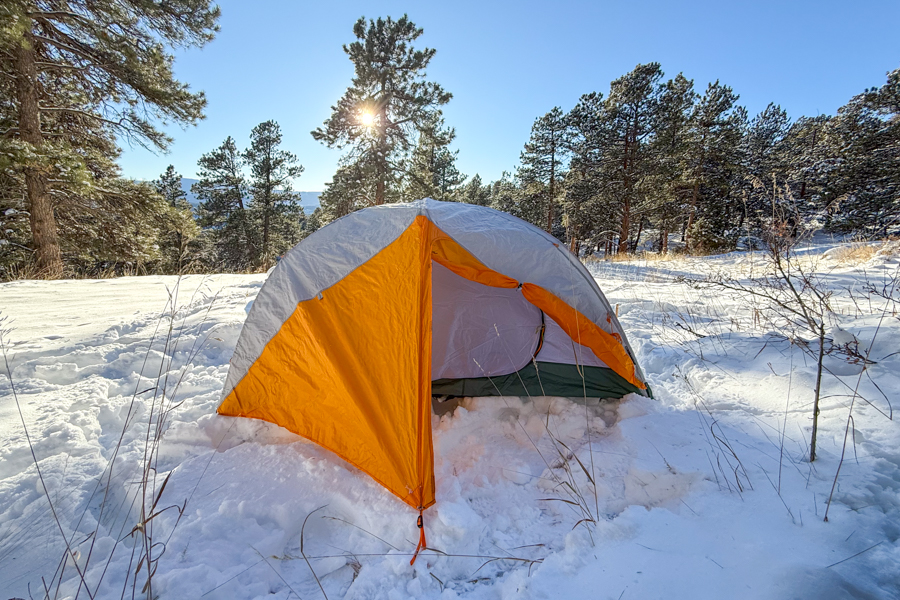
Why Trust CleverHiker
At CleverHiker, we take pride in our hands-on testing and deep expertise in outdoor gear. Our team, led by seasoned adventurers, rigorously evaluates every product in real-world conditions. Collectively, we’ve logged thousands of trail miles across diverse terrains, from the Rockies’ rugged peaks to remote alpine campsites.
Ben Dawson, our 4-season tent expert, brings over 200 nights of cold-weather camping experience, including multi-day ski tours in sub-zero conditions. As a guidebook author, full-time traveler, and father of two, Ben’s passion for type-two fun has evolved into teaching the next generation to embrace and enjoy the challenges of backcountry adventures.
With his extensive time spent navigating alpine terrain and testing gear in harsh conditions, Ben ensures every recommendation in this guide is backed by real-world expertise.

Analysis & Results
VALUE
When it comes to value, a 4-season tent isn’t just about price; it’s about what you get for your investment. Among the lineup, tents like the Alps Mountaineering Tasmanian 2 and the REI Co-op Arete ASL 2 deliver excellent performance at a lower cost, making them great for budget-conscious adventurers.
On the other end of the spectrum, the Mountain Hardwear Trango 2, Samaya 2.0, and HMG Ultamid 2 represent significant investments but offer specialized features for serious alpine expeditions. The NEMO Kunai 2, The North Face Mountain 25, and SlingFin CrossBow 2 hit the sweet spot, balancing affordability, versatility, and durability, making them exceptional long-term value options.
COMFORT
Comfort varies significantly among 4-season tents, especially considering the space limitations required for storm resistance. The Mountain Hardwear Trango 2 scores high here, with ample headroom, dual vestibules, and thoughtful interior organization.
For solo adventurers or smaller setups, the NEMO Kunai 2, Mountain Hardwear Mineral King All-Season, and SlingFin CrossBow 2 offer a good balance of livable space and weight savings.
In comparison, the MSR Advance Pro 2 and Samaya 2.0 are less forgiving and designed more for efficiency and weather protection than extended livability.
WEIGHT
Weight is often a deciding factor when choosing a 4-season tent, especially for backpackers and mountaineers tackling long approaches or alpine ascents. The lineup offers options across the weight spectrum, catering to various priorities.
For ultralight enthusiasts, the HMG Ultamid 2 stands out as the lightest option by far, weighing just over 1 pound. Its pyramid-style design is ideal for those looking to save every ounce while still maintaining solid protection. Joining the ultralight category, the MSR Advance Pro 2 and Samaya 2.0 weigh in at around 3.5 pounds, making them excellent choices for fast-and-light alpine missions. Both bivy-style tents are designed to handle harsh conditions, offering compact and efficient solutions for mountaineers who need reliable shelter in extreme weather.
While slightly heavier at just over 4 pounds, the MSR Access 2 brings more versatility to the table. Its double-wall design provides better ventilation and livability, making it a strong choice for backpackers seeking a tent that performs well across shoulder seasons and light winter conditions.
On the heavier end, the Mountain Hardwear Trango 2 and The North Face Mountain 25 prioritize durability and storm resistance. These beefier models are built to withstand intense wind and snow, making them ideal for more extended trips or basecamp setups in extreme environments. While they might add a few extra ounces to your pack, the added weatherproofing and structural integrity make them worth the weight for challenging conditions.
WEATHER RESISTANCE
Weather protection is the core of any 4-season tent. The KUIU Storm Star 2 stands out for its ability to withstand hurricane-force winds and heavy snow, making it a top choice for extreme alpine conditions. Heavier, more mountaineering-focused tents like the Mountain Hardwear Trango 2 and The North Face Mountain 25 always leave us little to worry about in inclement weather. Similarly, the Samaya 2.0 impresses with its fully waterproof single-wall design, featuring Dyneema and Nanovent materials that balance breathability and protection.
The MSR Advance Pro 2 delivers reliable performance in harsh environments, especially above treeline, with its bivy-style design and strong materials. For moderate winter and shoulder-season use, the NEMO Kunai 2 offers a lightweight yet storm-ready option, while the budget-friendly REI Co-op Arete ASL 2 provides solid below-treeline weather protection.
EASE OF SET UP
When setting up a four-season tent, simplicity and efficiency are key, especially in cold or windy conditions. The SlingFin CrossBow, SlingFin Portal, Mountain Hardwear Mineral King All-Season, and the NEMO Kunai lead the pack in ease of setup. These tents feature intuitive designs, color-coded components, and straightforward pole structures, making them quick to pitch even in challenging weather.
The REI Arete ASL 2 and MSR Access 2 are also relatively easy to set up. However, they may require a little more effort due to more complex pole arrangements or additional guyline attachments. While these tents still provide a smooth setup experience, spending a few minutes practicing at home can save time and frustration in the field. Overall, all these models strike a good balance between stability and ease of use, ensuring you can get shelter quickly when you need it most.
On the other end of the spectrum, we found the KUIU Storm Star 2 and Alps Mountaineering Tasmanian 2 to be a bit trickier to pitch than the rest of the pack, though not by much. The Storm Star’s unique pole structure can be a little confusing at first, but once you’ve pitched it a couple of times, it starts to make sense. The Tasmanian 2, on the other hand, has awkward pole sleeves for the additional fly poles that can be a hassle to work with. Neither is a dealbreaker, but they might take a little extra practice to get just right.
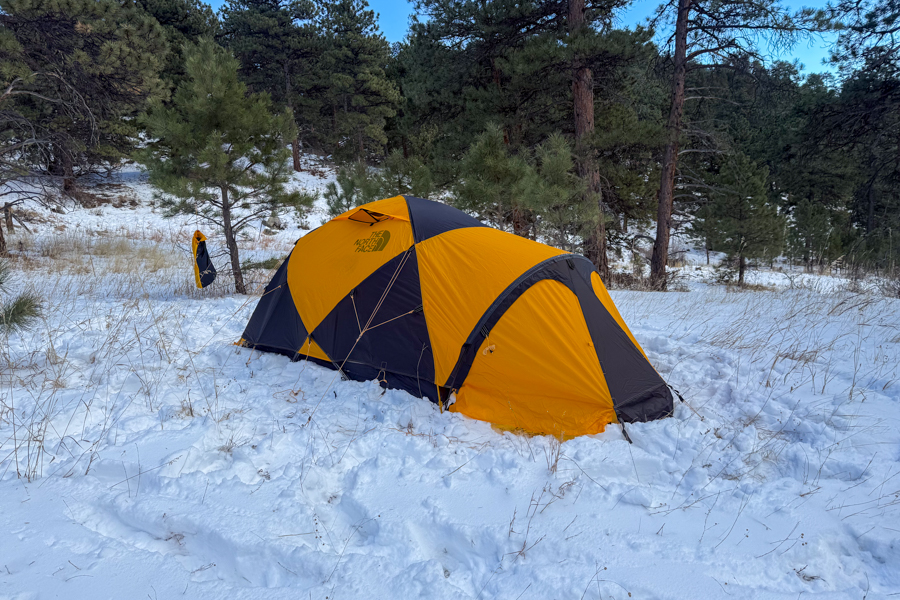
DURABILITY
These shelters need to withstand everything from abrasive terrain to heavy snow loads and strong winds. Among the most durable options, the KUIU Storm Star 2 stands out with its reinforced pole structure, high-denier fabrics, and robust stitching designed to handle extreme alpine conditions. The Alps Mountaineering Tasmanian 2 also delivers solid durability at a budget price point, though its materials aren’t as premium, and it may require more careful handling in rough conditions.
The SlingFin CrossBow 2 and SlingFin Portal 2 feature excellent construction, with reinforced stress points and premium DAC poles that provide impressive longevity. The Samaya 2.0 and MSR Advance Pro 2 may be ultralight options, but they don’t skimp on durability, boasting high-tech materials like Dyneema and silicone-coated fabrics for exceptional weatherproofing and abrasion resistance. However, they demand more care to avoid wear and tear over time.
For tents that prioritize versatility and durability, the Big Agnes Copper Spur HV3 Expedition offers a balance of heavy-duty materials and a design that can handle rugged conditions without feeling overbuilt. Lastly, the REI Arete ASL 2 and NEMO Kunai 2 hold up well for their price, providing enough toughness for most below-treeline adventures with minimal compromise.
VERSATILITY
Versatility is key for tent users who want to use their tents in various seasons and terrains. The NEMO Kunai 2 is one of the most versatile options, striking a balance between weight and protection, making it suitable for both winter and shoulder-season use. Similarly, the REI Arete ASL 2 excels as a 3+ season tent, offering enough durability for moderate winter conditions while remaining practical for year-round adventures.
The SlingFin CrossBow 2 is the leader in adaptability, with customizable setups that allow you to modify its strength and weight based on the conditions. The Big Agnes Copper Spur HV3 Expedition is another strong contender, providing enough space and comfort for shoulder-season use and sturdy enough for below-treeline winter adventures.
On the more specialized end of the spectrum, the Samaya 2.0 and MSR Advance Pro 2 cater to fast-and-light alpine missions, excelling in extreme conditions but less versatile for mild weather or general use. Their minimalist designs prioritize weight and weather resistance over livability, making them better suited for experienced mountaineers than casual campers.
Similarly, the KUIU Storm Star 2 and Alps Mountaineering Tasmanian 2 are less versatile options. The Storm Star is built for harsh, wind-blasted alpine environments but feels overbuilt and less practical for milder conditions. Meanwhile, the Tasmanian 2 offers solid performance for winter camping but is heavy and lacks the refinement to transition into shoulder-season or summer use comfortably. Both excel in specific scenarios but fall short for those seeking an all-season tent.

How to Choose a 4-Season Tent
Choosing a 4-season tent involves balancing critical features like weather protection, weight, interior space, and durability to match your specific needs. Here are the key considerations to help you make an informed decision.
TYPES OF 4-SEASON TENTS
Winter tents are generally categorized into three main types: mountaineering, base camp, and treeline. Deciding the types of conditions you’ll camp in most often is a good place to start when deciding which type of 4-season tent is best for you.
4-season tents fall into three main categories: mountaineering, basecamp, and treeline.
Mountaineering tents
Mountaineering tents prioritize lightweight designs with robust weather protection. They’re ideal for exposed alpine environments, balancing portability and resilience against strong winds and snow loads.
Basecamp tents
Basecamp tents are heavier but sturdier, built for prolonged stays in harsh winter conditions. These are best when you don’t need to carry your tent far but require maximum protection.
Treeline tents
Treeline tents are a hybrid, offering more weather resistance than 3-season tents but with a lighter weight for milder winter conditions.
The conditions you expect to face will dictate which type of tent is most suitable.
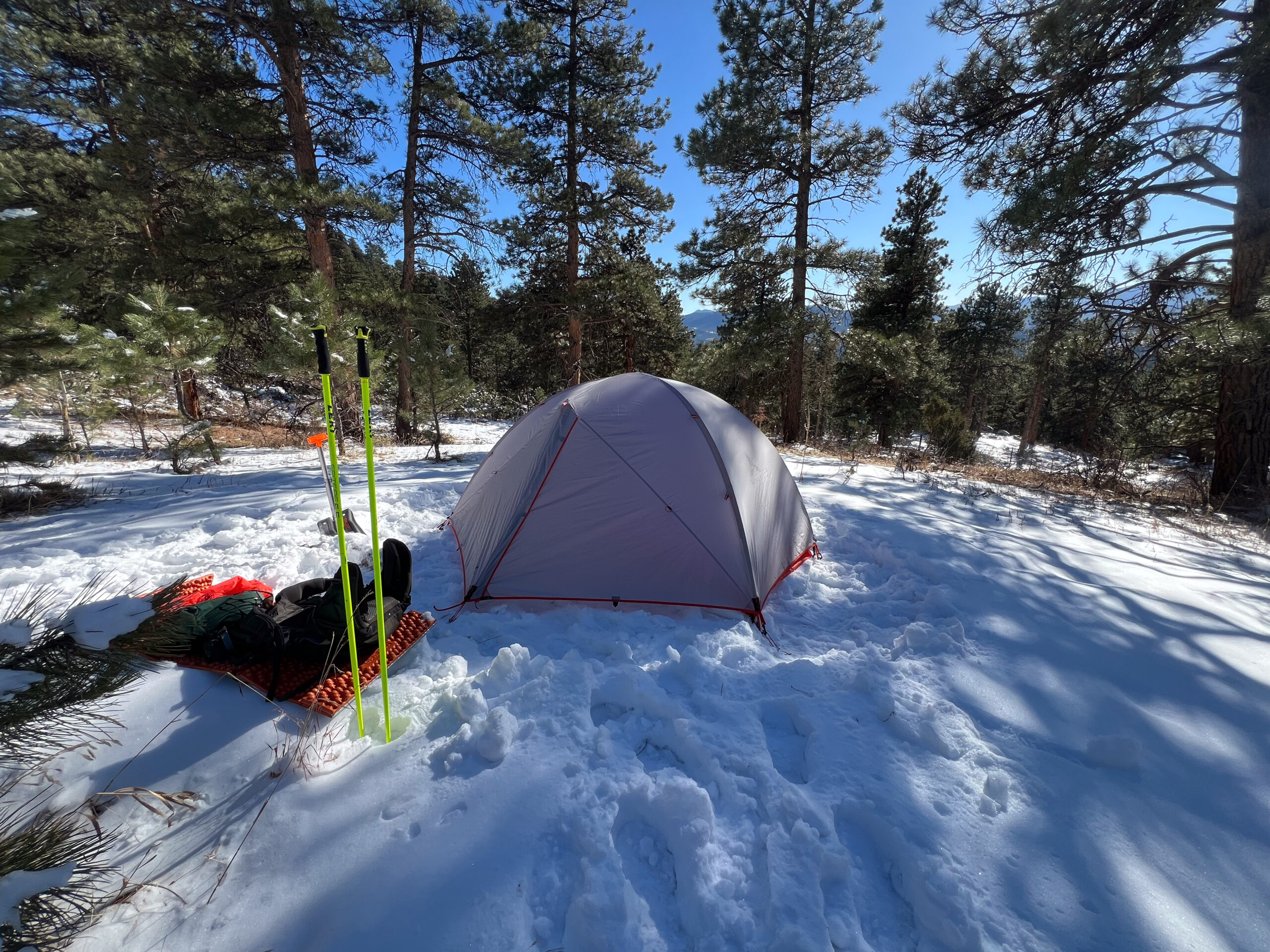
OTHER FACTORS YOU MAY WANT TO CONSIDER:
Weight
Weight is a significant factor, especially for multi-day treks or alpine climbs. Heavier tents provide better weather resistance and durability, but may be a burden on long hikes. Lightweight options are easier to carry but may sacrifice interior space or robustness. When deciding, consider your activity type, how far you’ll need to carry the tent, and how much protection you’ll need.
Interior Space
Comfort is essential for extended periods in a four-season tent. Look for designs with enough floor space, high peak height, and near-vertical walls for better livability. Interior features like pockets and gear lofts help keep essentials organized, while vestibules provide crucial storage space for gear, keeping the interior less cluttered. Dual doors can enhance convenience for shared use, preventing disruptions when entering or exiting.
Weather Protection
A four-season tent’s primary role is to protect you from harsh weather. Consider the tent’s ability to handle snow, wind, and rain, along with features like reinforced poles, guylines, and durable fabric coatings. For alpine or exposed environments, tents with robust pole structures and low-profile designs perform better in extreme conditions. In less severe weather, lighter designs with moderate weatherproofing may suffice.
Ventiliation
Proper ventilation is essential to reduce condensation buildup inside the tent. Look for features like adjustable vents, mesh panels, and breathable fabrics. Double-wall tents often have better airflow, while single-wall designs, though lighter, require careful management to avoid damp interiors in humid conditions.
Setup & Durability
Four-season tents often require more precise setups due to their advanced pole systems and guyline configurations. Practice pitching your tent before heading into the backcountry to save time and frustration. Additionally, check the durability of materials, especially if you’ll be using the tent in rugged terrain or for multiple seasons. A durable floor and reinforced stress points will ensure your tent holds up under harsh conditions.
With these factors in mind, you’ll be ready to choose a 4-season tent that meets your needs and ensures comfort, protection, and reliability during your winter adventures.
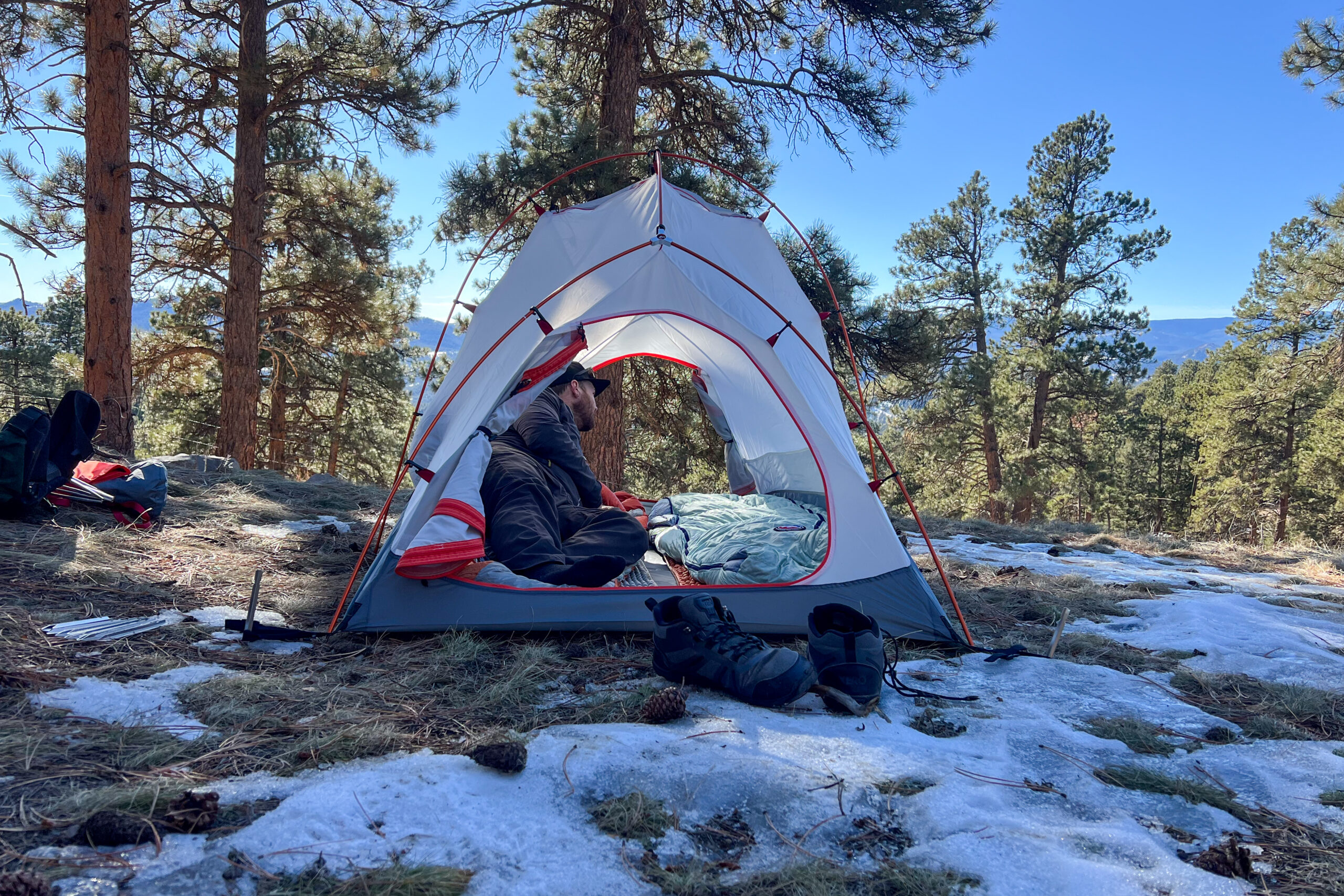
Conclusion
At CleverHiker, we’ve put in the miles and braved the elements to bring you the most reliable recommendations for 4-season tents. Our thorough testing process ensures that every tent in this guide meets the highest performance, comfort, and durability standards. Whether tackling alpine peaks, winter camping, or seeking year-round versatility, we’ve got you covered with expert insights and comparisons. With our guidance, you can confidently choose the proper shelter to make your adventures safer and more enjoyable.
